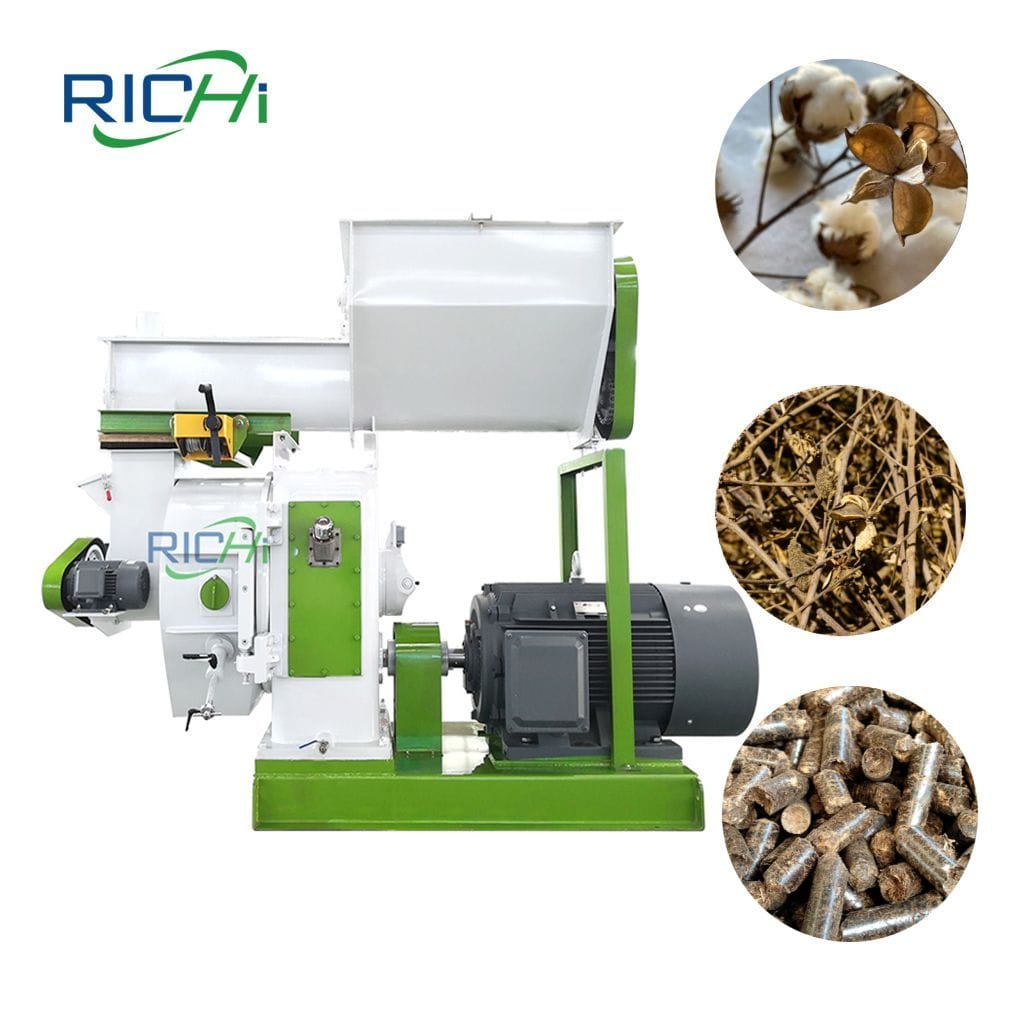
Cotton Stalk Pellet Machine
The cotton stalk pellet machine is a biomass pelletizing machine that compresses the crushed dry cotton straw into pellets through physical compression.
This equipment is a type of straw pellet machine and adopts a classic horizontal ring die structure, can evenly press all kinds of cotton stalks, corn stalk, wheat straw, flax straw, rice straw, bean straw, tobacco straw, hay and other straw types into fuel and other agricultural and forestry waste. It can also be used to press pellets feed for livestock and ruminants.
- Capacity: 0.6-42T/H
- Price: 10,000-100,000 USD
- Equipment Types: MZLH cotton straw fuel pellet machine and cotton straw feed pellet machine
- Cotton pellet sizes: 2-12mm for feed, 6-10mm for fuel
- Suitable raw materials: cotton stalks, cotton ball stalks, dried cotton stalks, natural cotton stalks, cotton plant stem, etc.
- Applications: Biomass pellet plant, fuel pellet plant, wood pellet factory, animal feed mill plant, fully automatic cattle feed plant, ruminant feed factory, sheep feed plant, horse feed factory, etc.
The cotton ball stalks pellet machine provided by RICHI has been widely used for the processing of straw fuel pellets and straw pellet feed in the world, and has been exported to Russia, Canada, India, Indonesia, South Africa, Vietnam, Argentina, Brazil, New Zealand, Australia, and Pakistan and other countries.
Videos of cotton stalk pellet machine
Application of cotton stalk pellet machine
At present, cotton straw pellet machines are mainly used in cotton stalk pellet fuel pellet production and cotton stalk pellet feed production.
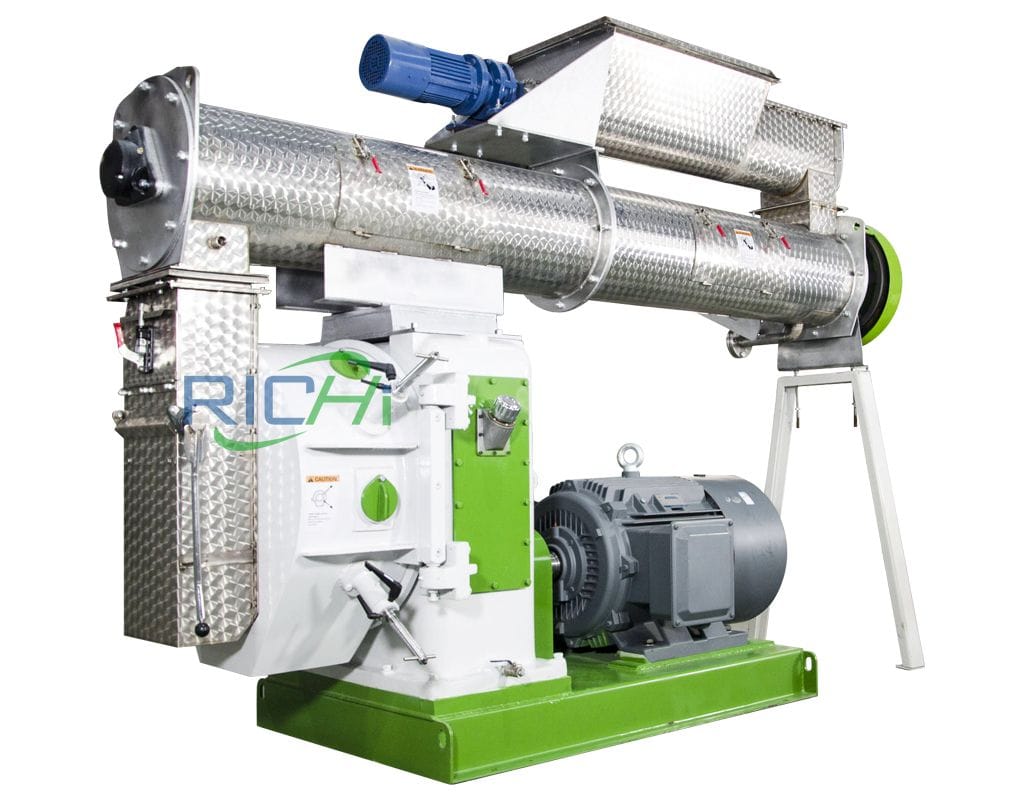
For cotton stalk pellet feed
The digestibility of raw cotton stems by ruminants is only 20% to 30%. Therefore, it is necessary to add auxiliary materials. In order to ensure that the feed is rich in nutrients, protein, starch, fat, sugar, etc. are generally added to the straw, and a feed type cotton stalk pellet machine is used.
This not only improves the palatability of the feed, increases the bulk density, and improves the tolerance of ruminants. The feed intake of cotton stalk stem also increases the degradation rate of cotton stalks organic matter by rumen microorganisms and increases the absorption of nutrients.
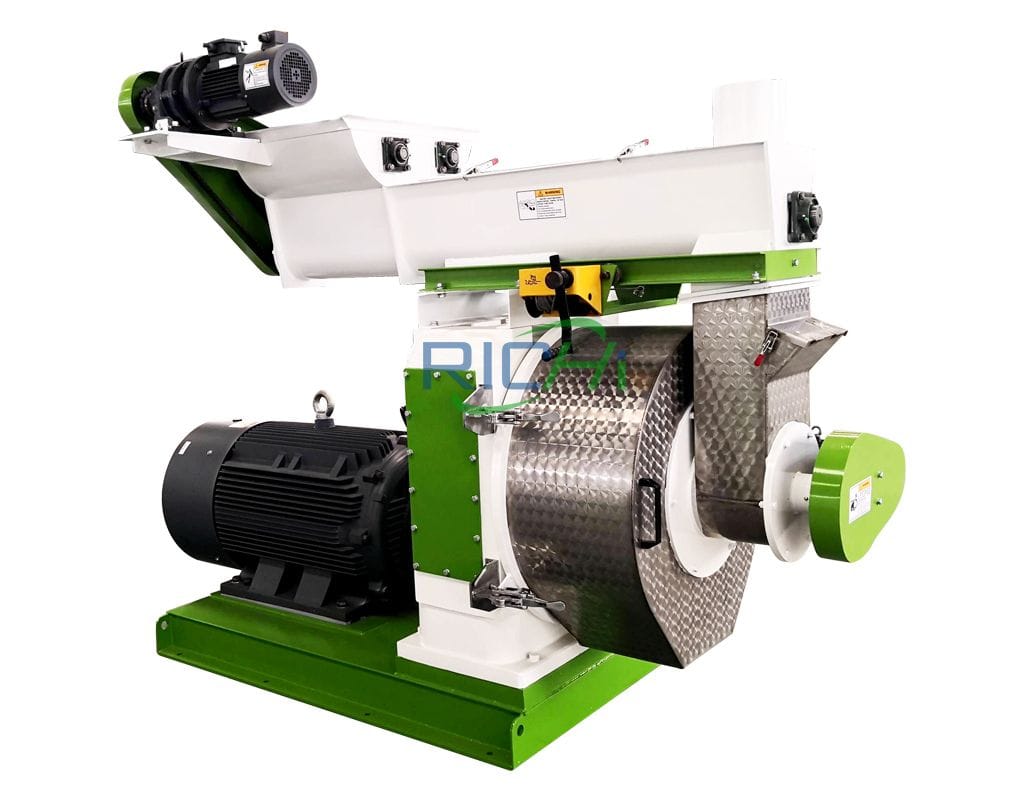
For cotton stalk pellet Fuel
Compared with loose crushed raw cotton stalks, the combustion characteristics of cotton stalks pellet fuel after compression molding with cotton stalk pellet machine are significantly improved, with less ash and less black smoke.
The firepower is long-lasting, the furnace temperature is high, the combustion is sufficient, and the combustion characteristics are obviously improved. The pellets are uniform and can meet the requirements of automatic feeding systems such as power plants. The density is 6 to 8 times greater than loose cotton stalks, making it easy to use.
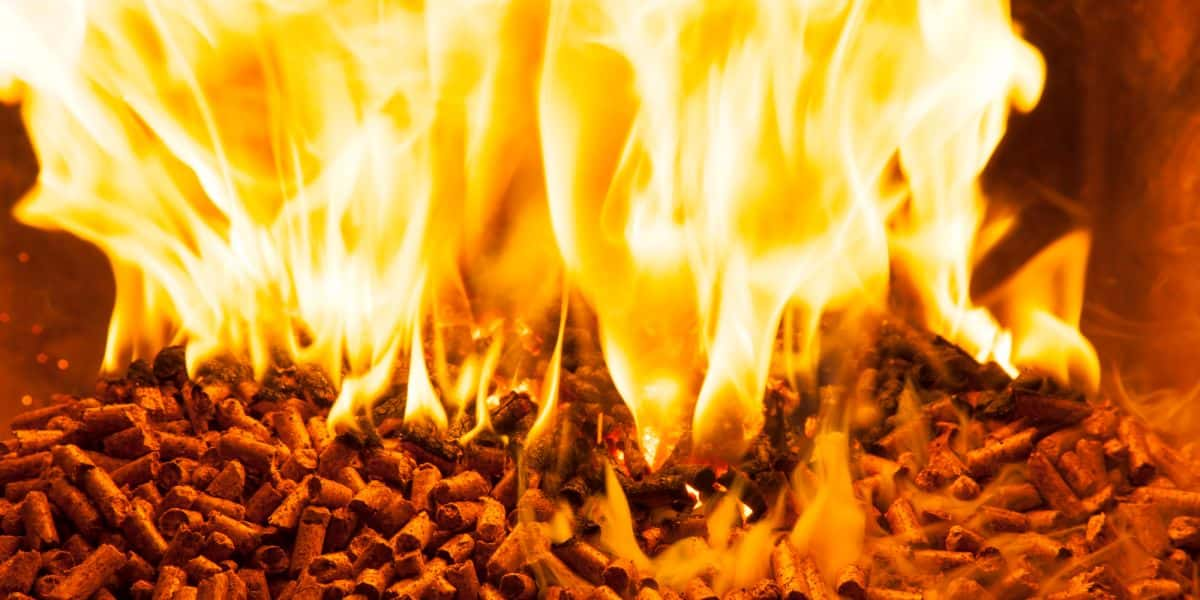
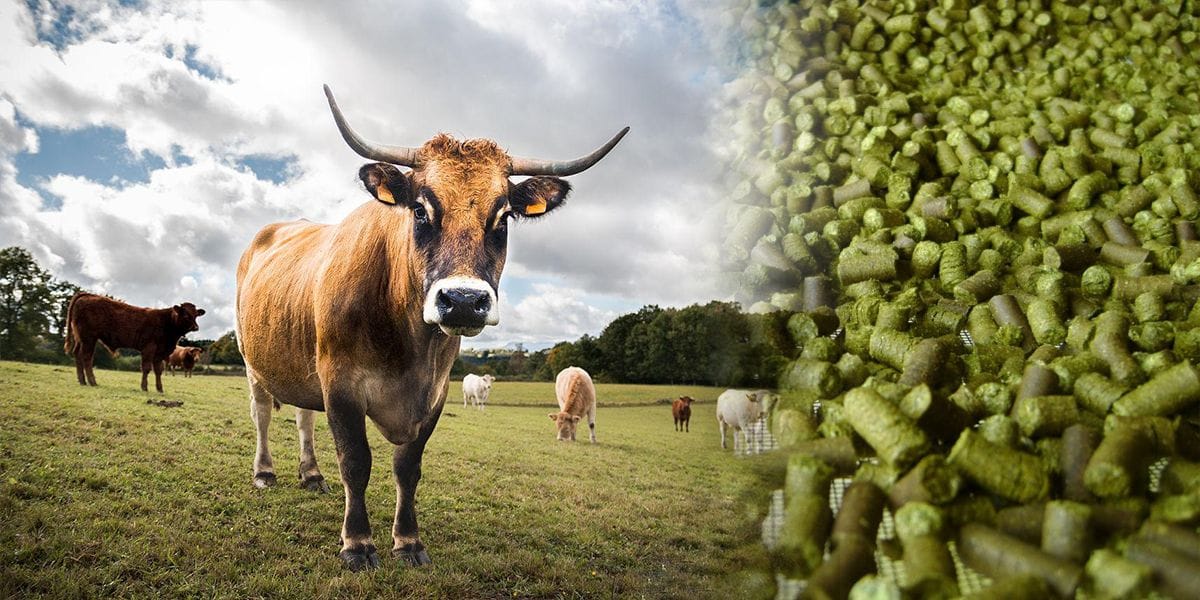
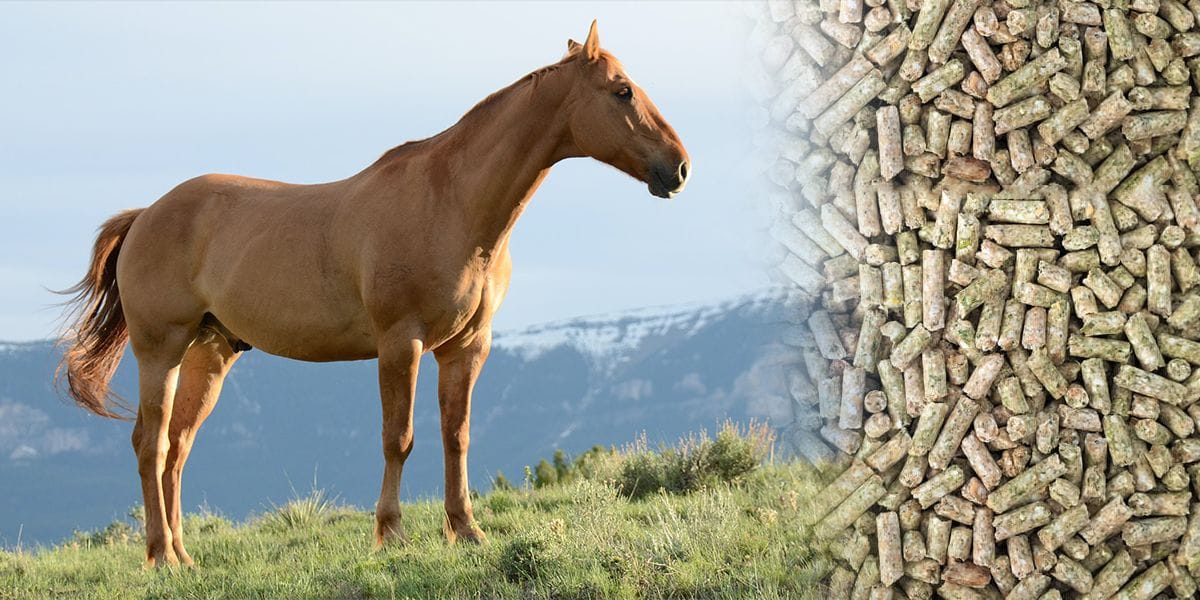
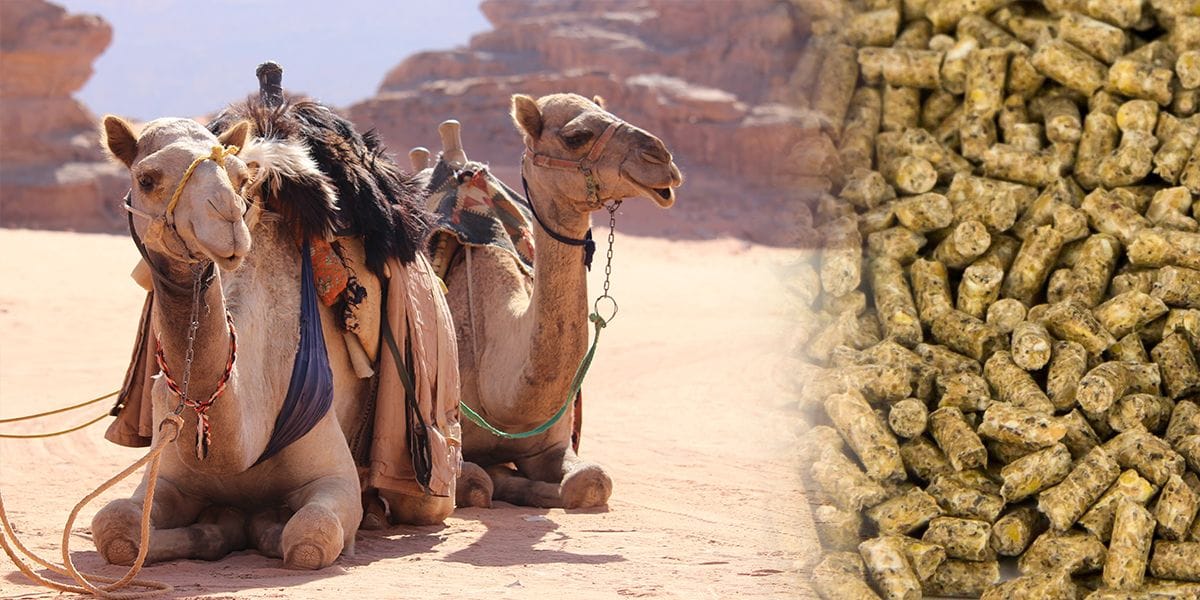
The molding dimensions of cotton stalks pellet fuel and cotton stalks pellet feed are basically the same, with a pellet diameter of 2 to 12 mm and a length of about 5 to 30 mm.
Due to the addition of additives, pellet feed has higher nutrients such as crude fiber and crude protein than pellet feed. Compared with pellet feed, the formed straw solid pellet fuel has lower moisture content, high solidity, high pellet density, and long storage period.
Features of cotton stalk pellet machine
The cotton stalk pellet mill machine adopts various molding technologies such as cold pressing molding and extrusion molding, and the grease polishing and shaping process makes the cotton stalks pellets beautiful in appearance and compact in structure.
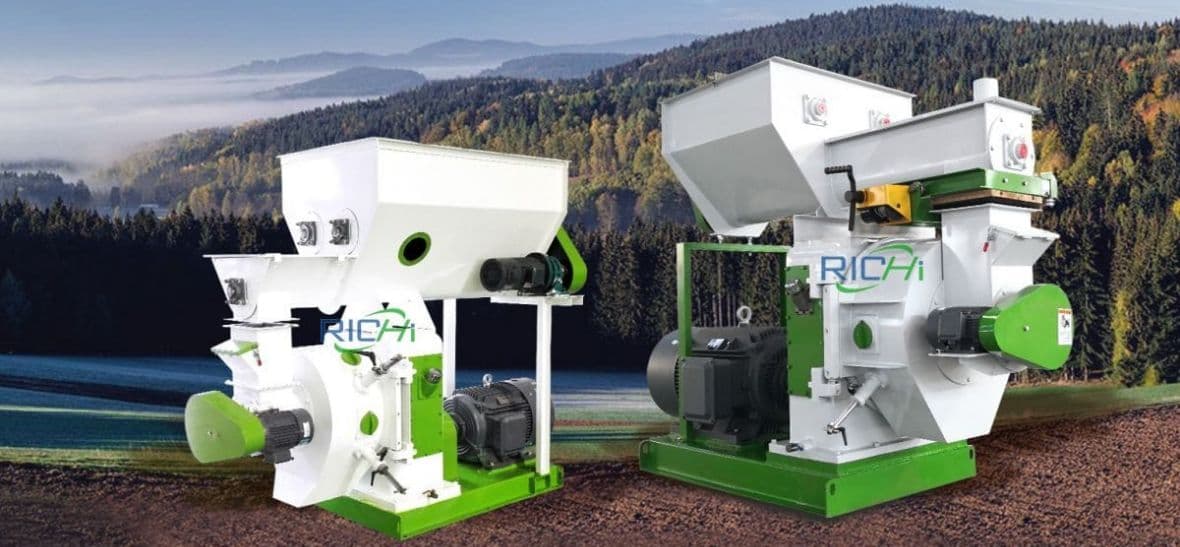
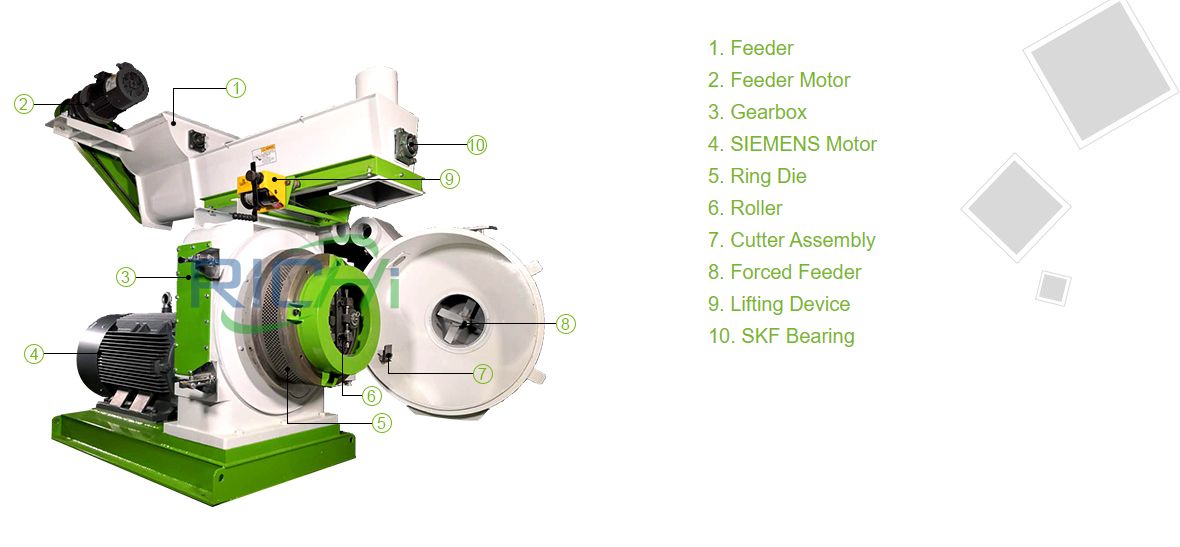
- The main drive adopts high-precision gear transmission, and the ring die adopts quick-release hoop type. The output is about 20% higher than that of belt drive type.
- High quality imported bearings and oil seals are selected in the transmission part of the whole machine to ensure high efficiency, stability and low noise.
- Frequency conversion feeding can be used to effectively prevent the uneven feeding caused by voltage instability.
- Strengthen and lengthen hardening conditioner with large open door for cleaning.
- Compensation snake spring coupling with advanced international level has novel structure, compact, safe and low fault performance.
- Increase efficiency and high output. High degree of automation, strong applicability.
- The key components of the straw pellet machine are made of some alloy steel and wear-resistant materials, and are heat treated in a vacuum furnace to extend the service life by 5-7 times.
- The cotton stalk pellet making machinee adopts a pressure regulating mechanism in the screw. The mold gap can be increased or decreased to suit different materials to ensure the compression effect. The pressure wheel of the biomass pellet machine adopts a large groove width, which is pressure-bearing and wear-resistant.
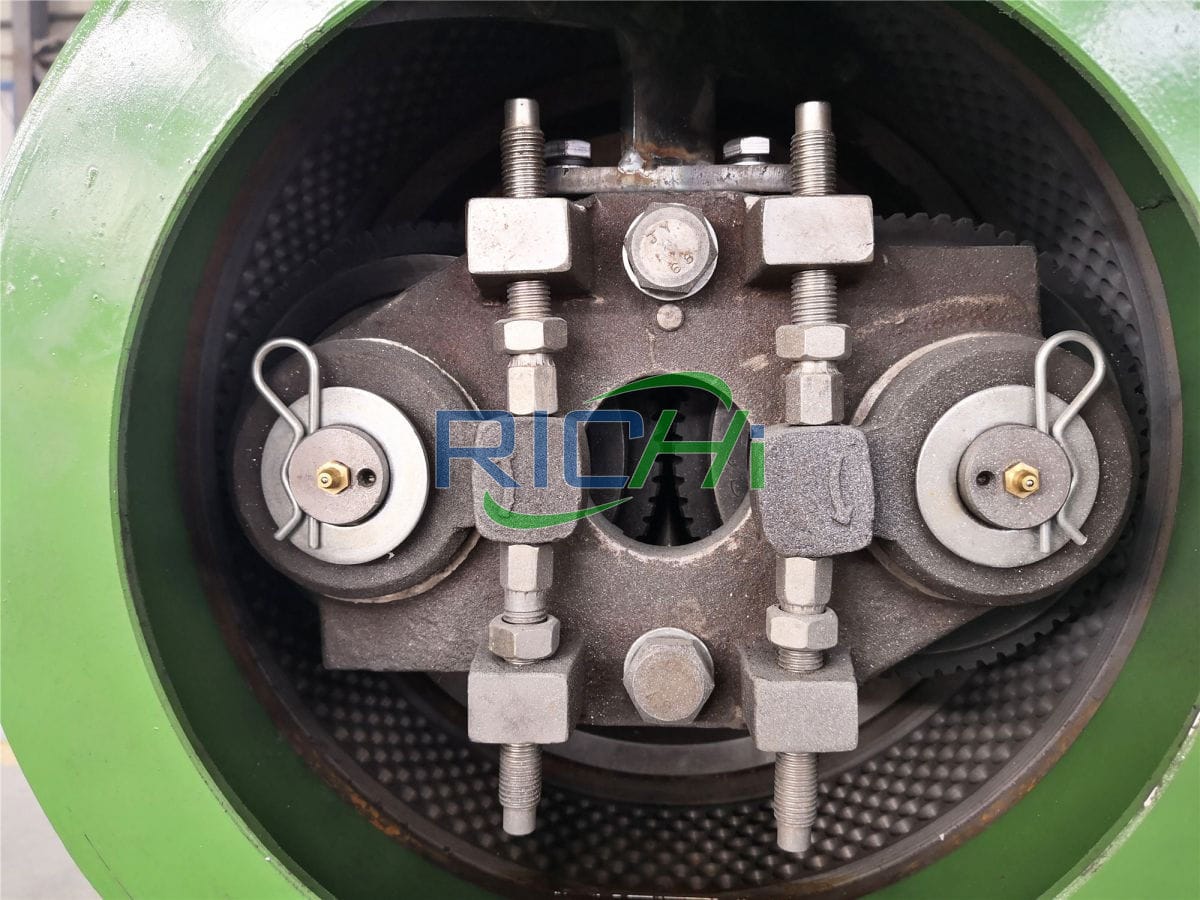
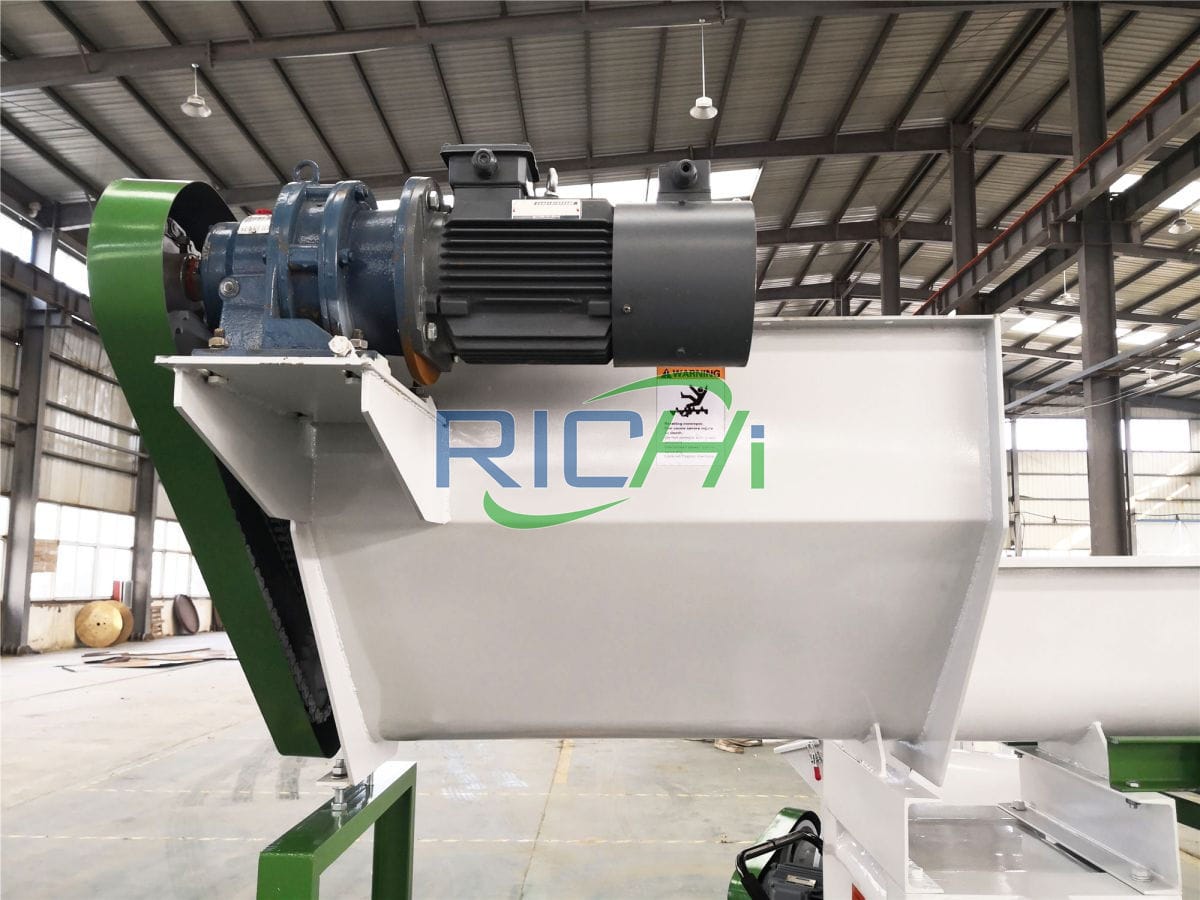
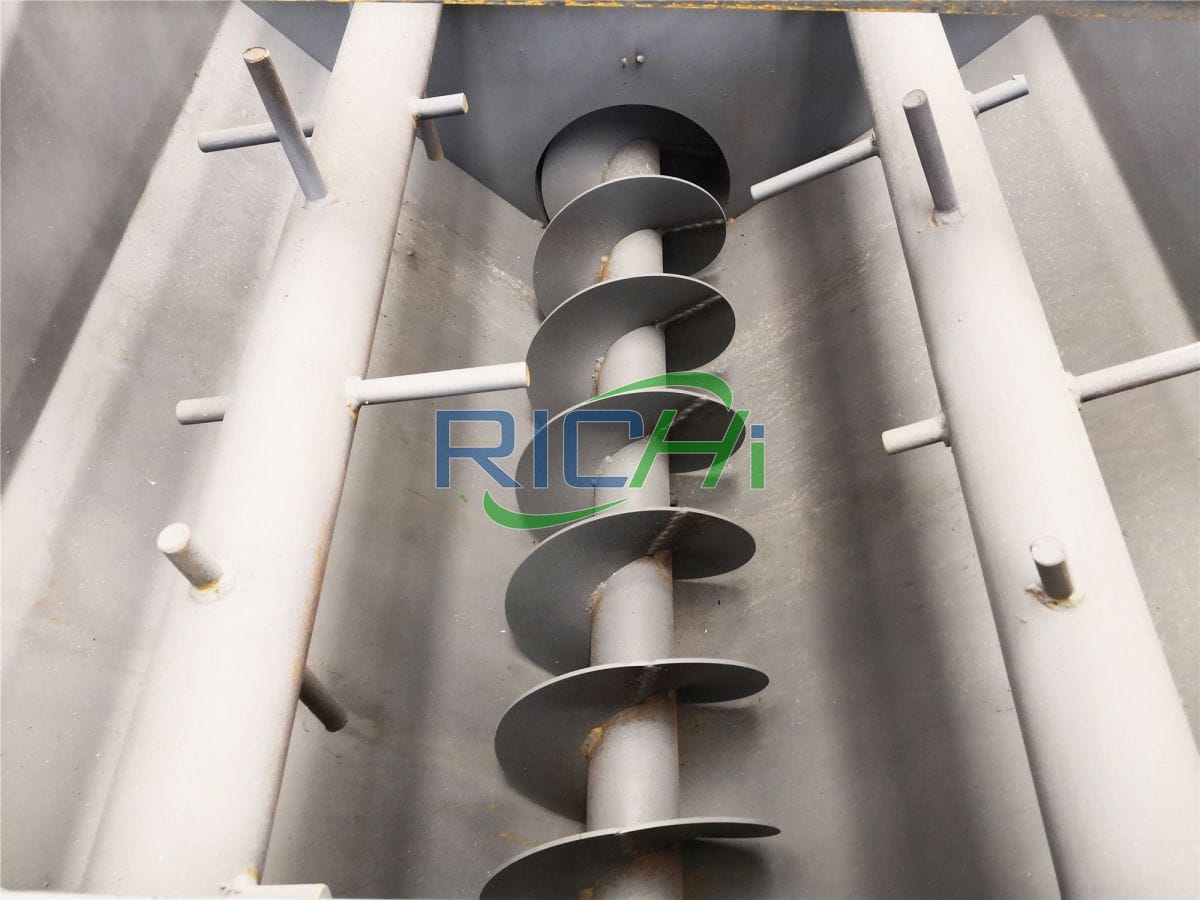
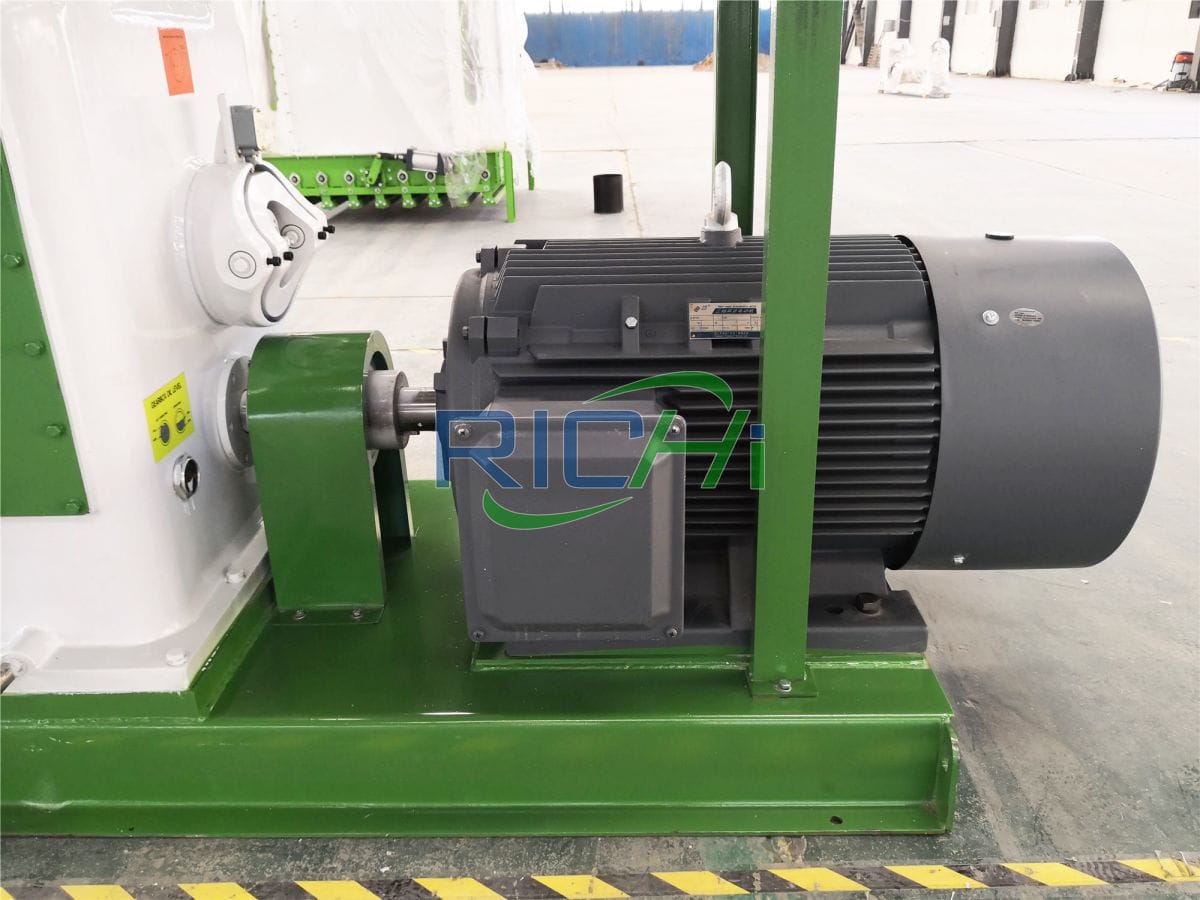
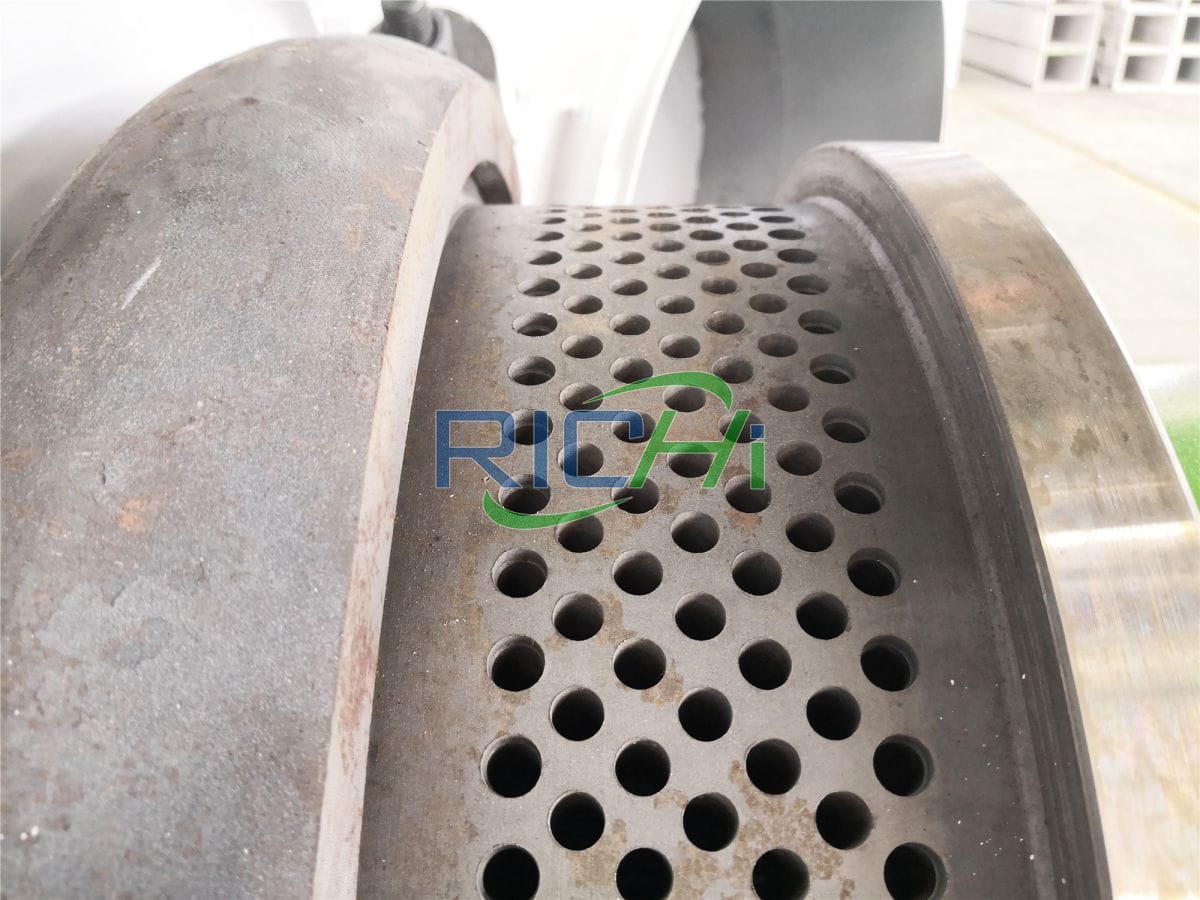
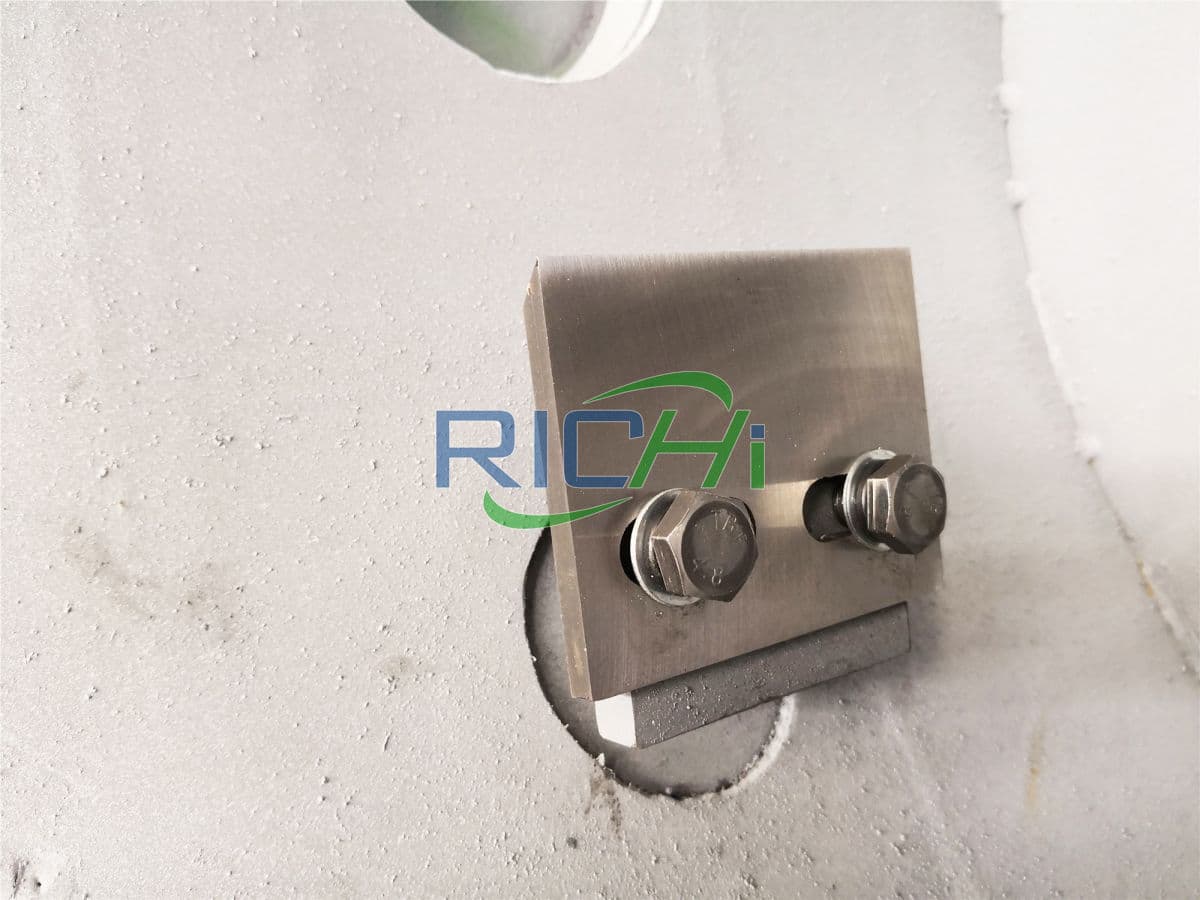
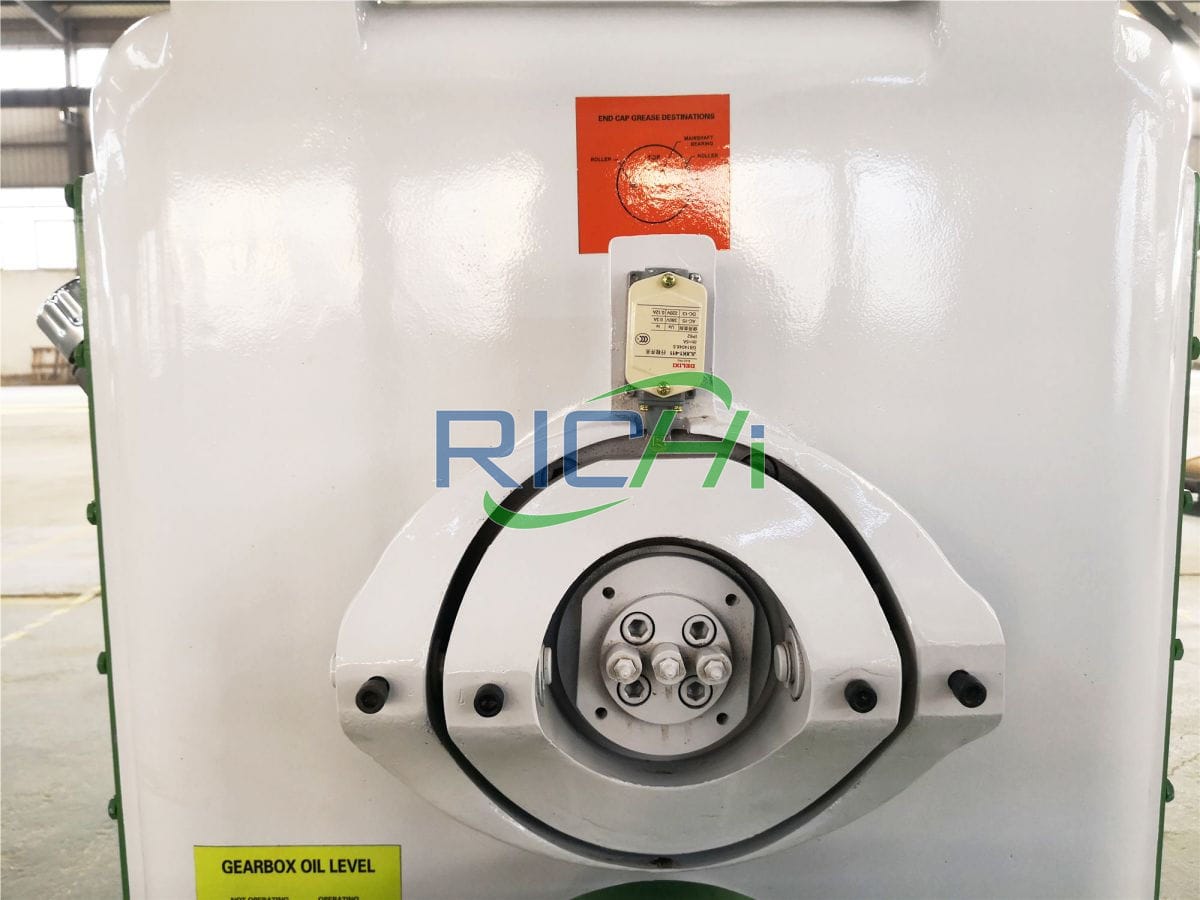
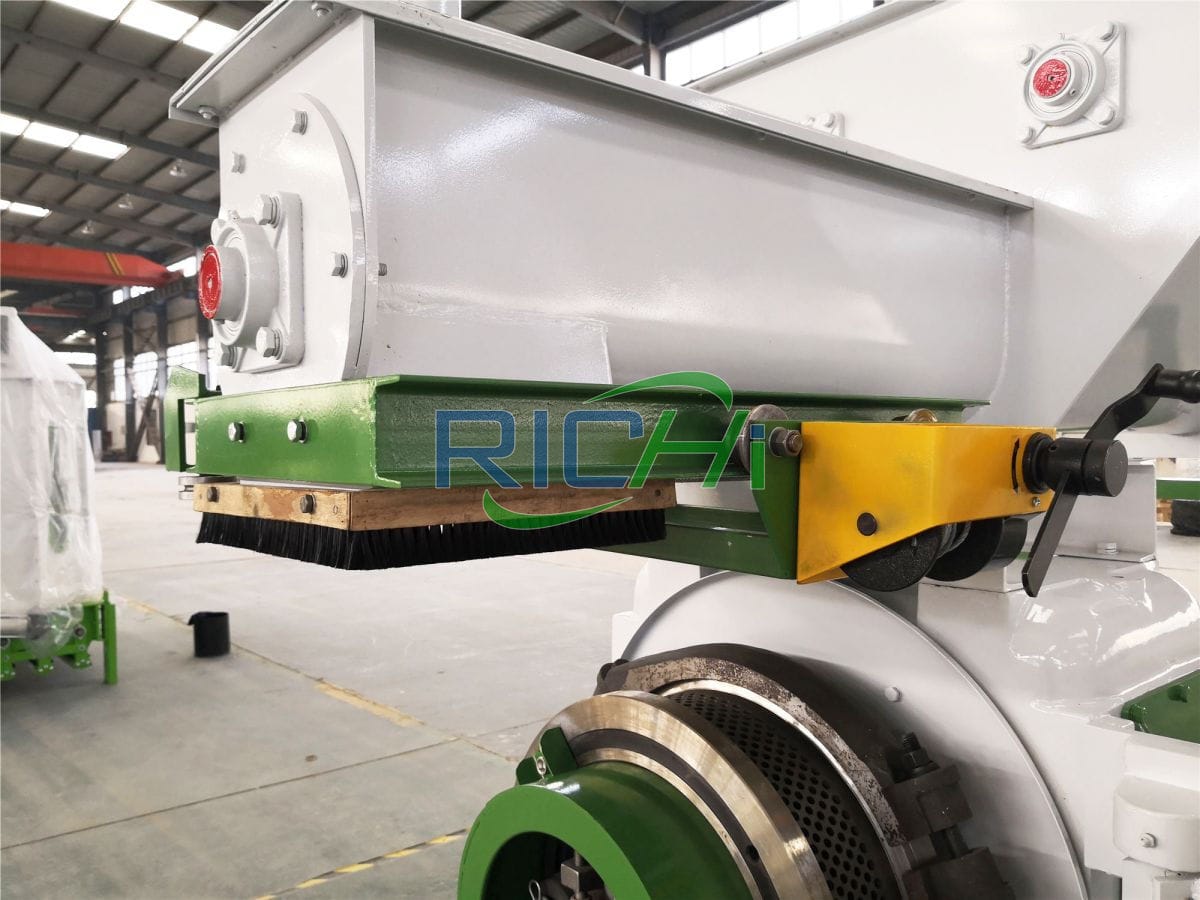
In addition to cotton straw pelletizing machines, we also provide various straw pellet processing equipment such as corn stalk pellet machines, wheat straw pellet machine, rice straw pellet making machine. If you want to buy stalk pellets manufacturing equipment, please feel free to consult Richi Machinery!
Working principle of cotton stalk pellet machine

- During operation, the crushed cotton stalks material is fed into the extrusion chamber composed of a pressing roller and a pressing die through a horizontal screw feeding mechanism.
- The motor drives the rotation of the pressing die and the rotation of the pressing roller to squeeze the material into a certain density.
- The pellets are discharged from the die holes.
Technical parameters of cotton stalk pellet machine
| Model(For fuel pellets) | MZLH320 | MZLH350 | MZLH420 | MZLH520 | MZLH768 | MZLH858 |
| Output (t/h) | 0.3~0.5 | 0.5~0.7 | 1.0~1.5 | 2.0~2.5 | 2.5~4 | 4~5 |
| Main motor power (kw) | 22 | 37 | 90 | 132 | 250 | 280 |
| Main motor series | 8P | |||||
| Ring die diameter (mm) | 320 | 350 | 420 | 520 | 762 | 858 |
| Finished pellet diameter (mm) | 6-12mm | |||||
| Device Configuration | Ring die material: 42CrMo Stainless steel feeder: with anti-caking function Door of pelleting room: 6mm /SUS304 Forced feeding: Worm gear reducer Gear box: HT250 Gear: 42CrMo Gear shaft: 42CrMo Spindle: 42CrMo Empty shaft: 42CrMo Bearings: The gear shaft and main shaft bearings are SKF, and the pressure roller bearings are domestic high-quality bearings Oil seal: Germany/Taiwan Overload mechanical protection: safety pin Serpentine spring coupling drive Lubrication system: Configurable automatic oil injection system | |||||
| Type (For Feed Pellets) | MZLH320 | MZLH350 | MZLH420 | MZLH520 | MZLH768 | MZLH858 |
| Output(t/h) | 0.7-4 | 1~6 | 2~10 | 3~15 | 4~30 | 5~40 |
| Main motor power(kw) | 22 | 37 | 90 | 132 | 250 | 280 |
| Main motor series | 6/8P | |||||
| Forced Feeder (KW) | 1.1 | 1.5 | 1.5 | 1.5 | 2.2 | 3 |
| Conditioner Power(kw) | 2.2 | 4 | 7.5 | 7.5 | 11 | 15 |
| Ring die diameter (mm) | 320 | 350 | 420 | 520 | 762 | 858 |
| Finished pellet diameter (mm) | 6-12mm | |||||
| Device Configuration | Ring die material: 42CrMo Stainless steel conditioner Door of pelleting room: 6mm /SUS304 Forced feeding: Worm gear reducer Gear box: HT250 Gear: 42CrMo Gear shaft: 42CrMo Spindle: 42CrMo Empty shaft: 42CrMo Bearings: The gear shaft and main shaft bearings are SKF, and the pressure roller bearings are domestic high-quality bearings Oil seal: Germany/Taiwan Overload mechanical protection: safety pin Serpentine spring coupling drive Lubrication system: Configurable automatic oil injection system | |||||
Pelleting requirement of cotton stalk pellet machine
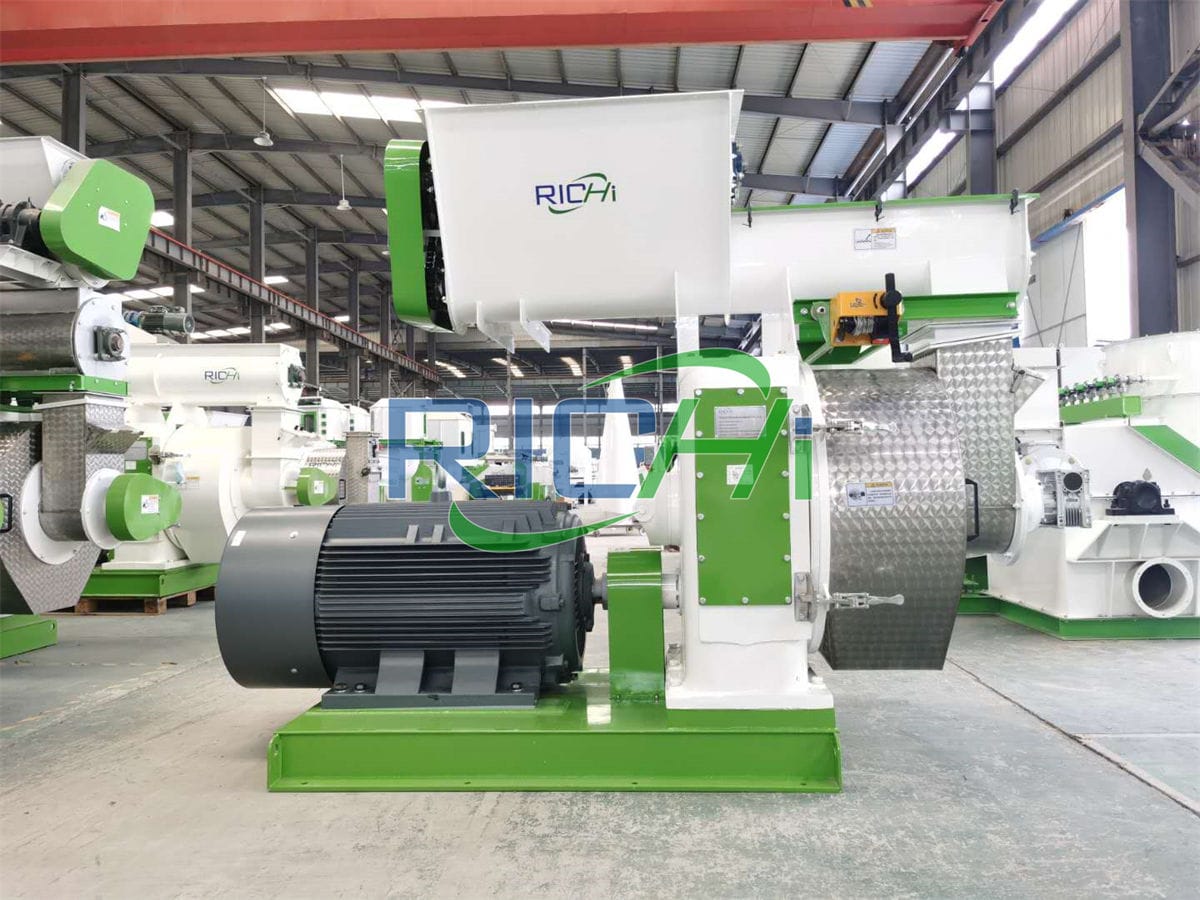
Molding conditions for cotton stalks pellets:
When the moisture content of the raw material is 20% and the particle size is 2 to 4 mm, cotton stem pellet fuel shows excellent basic properties.
Its low calorific value meets the minimum requirements for the low calorific value of commercial biomass pellet fuel specified in the German standard “Wood Pellet Fuel” (> 17. 5 MJ/kg).
Granulation reduces the volume of forage, facilitates storage and transportation, and reduces losses.
- The moisture content of the mixed raw materials used for granulation is one of the important factors affecting the molding effect.
- If the moisture content is too high, the particles will be soft and the mold cavity will be blocked.
- If the moisture content is too low, it will be difficult to mold.
- In addition, the crushed raw cotton stalks has high cellulose content and poor granulation. In addition to controlling the moisture content, auxiliary raw materials with binding effects must be added to improve the forming effect of the granules.
cotton stalk pellet machine Projects
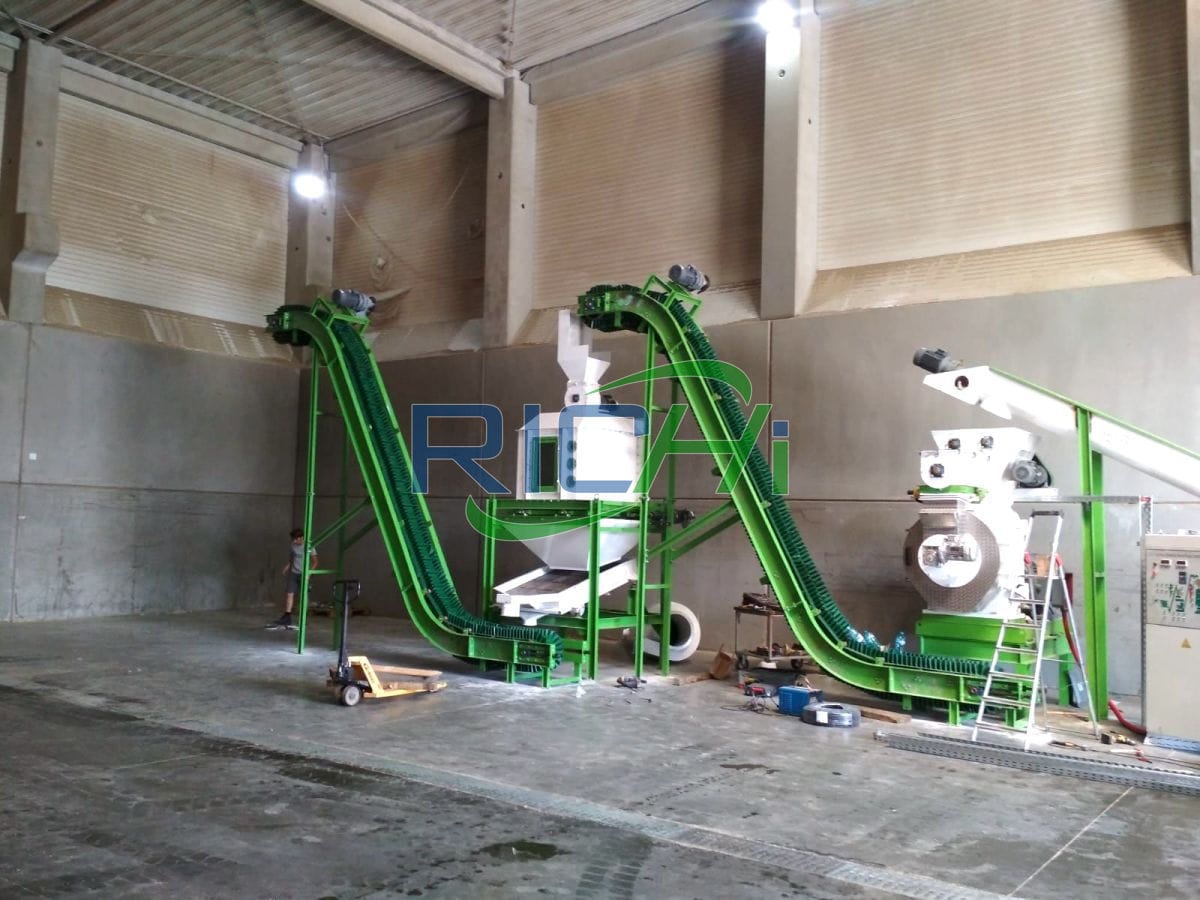
cotton stalk pellet machine in Turkey
- project date: 2020.09.01
- Pellet Size: 6mm
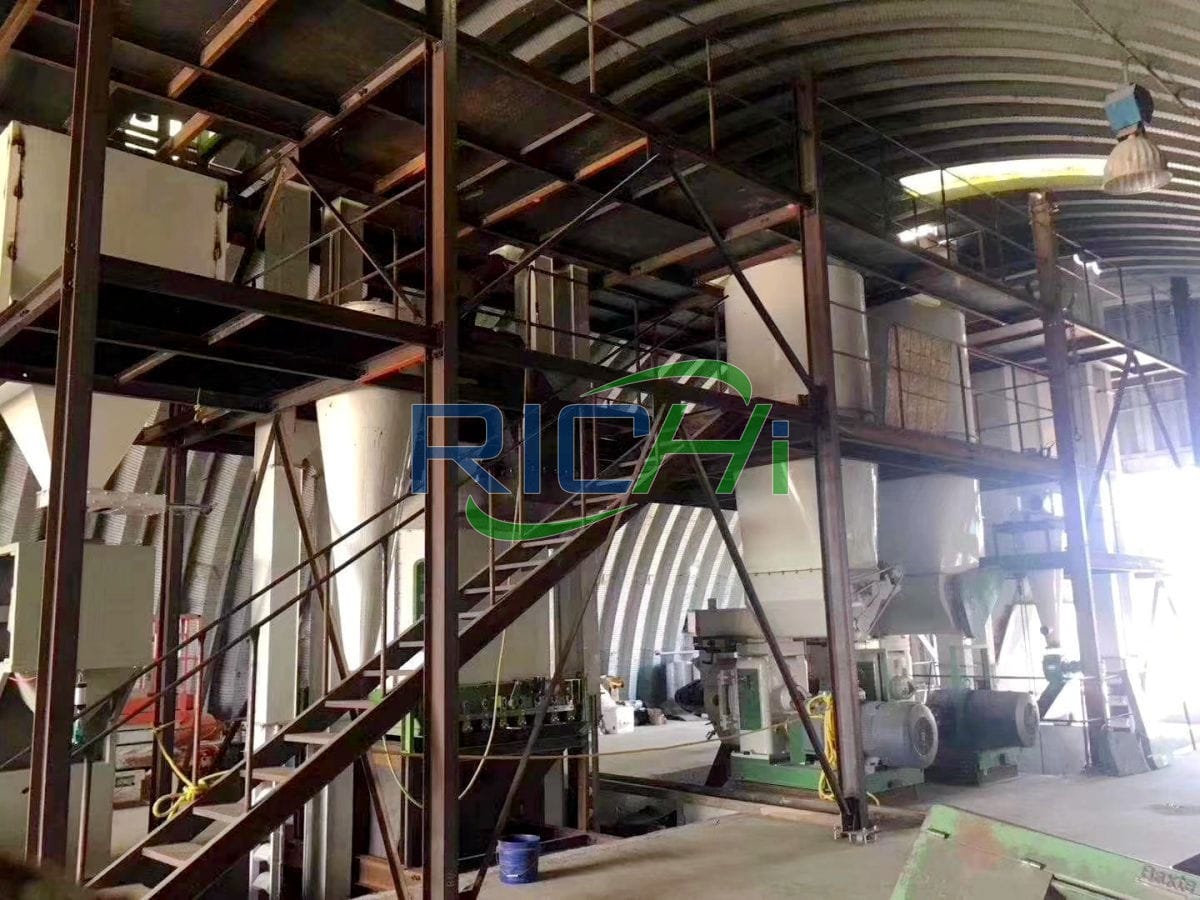
cotton stalk pellet machine in Pakistan
- project date: 2021.11.27
- Pellet Size: 8mm
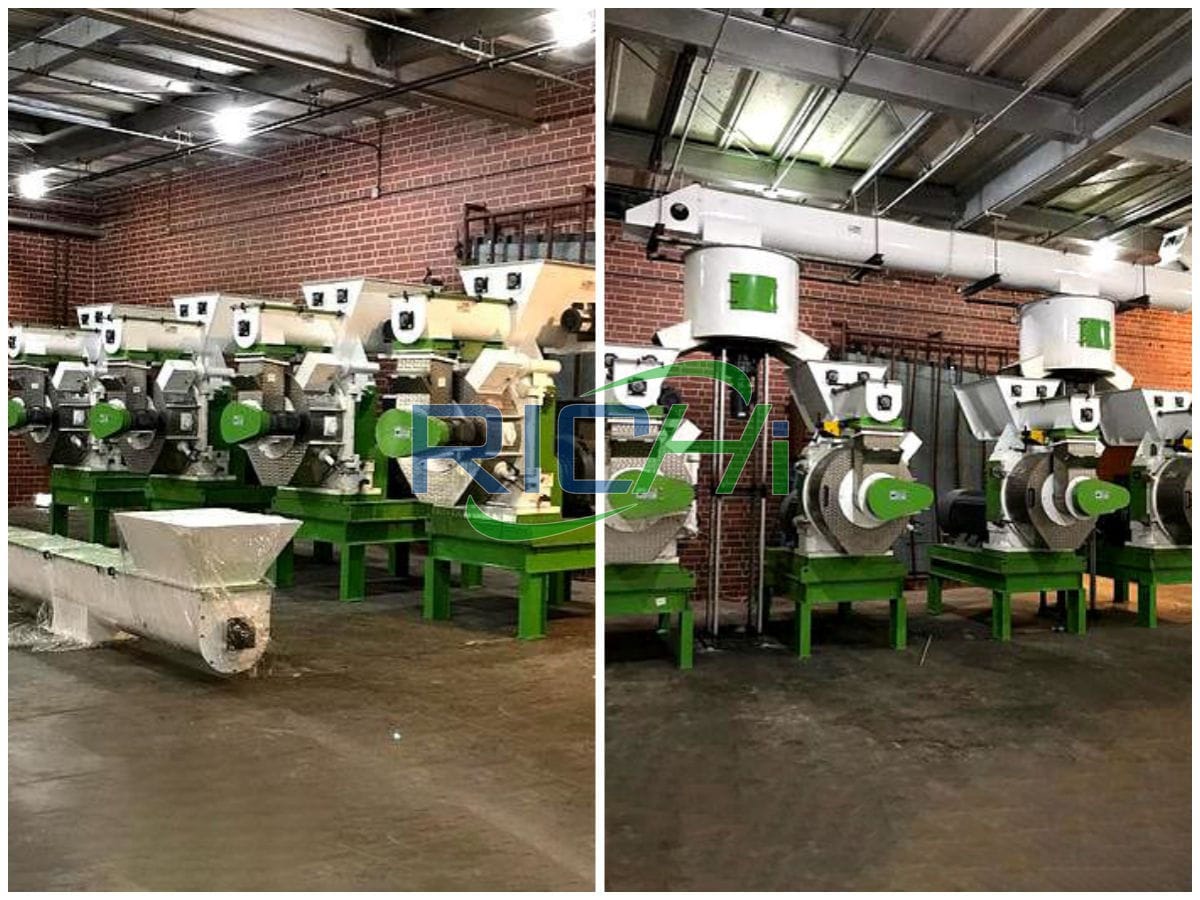
cotton stalk pellet machine in United States
- project date: 2020.12.11
- Pellet Size: 6-8mm
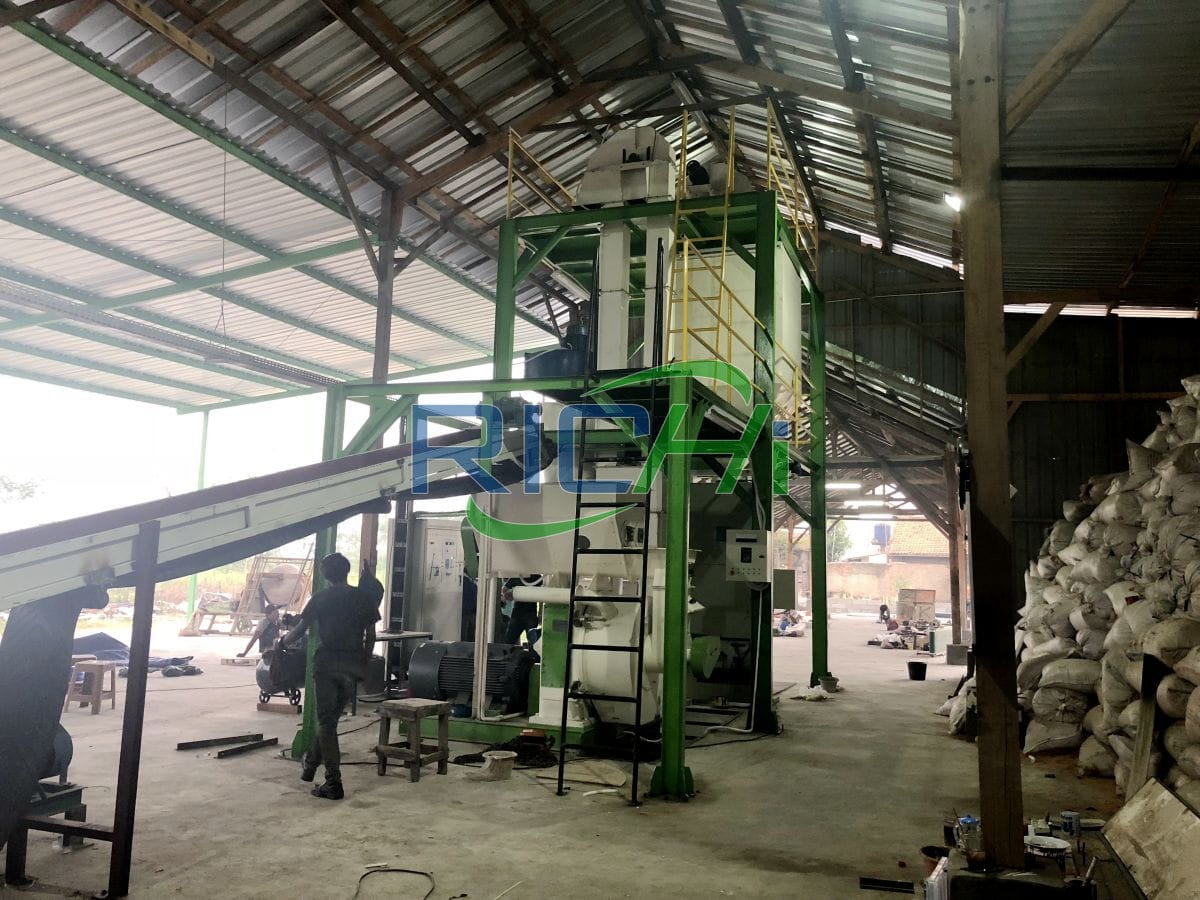
cotton stalk pellet machine in Argentina
- project date: 2020.04.15
- Pellet Size: 8-10mm
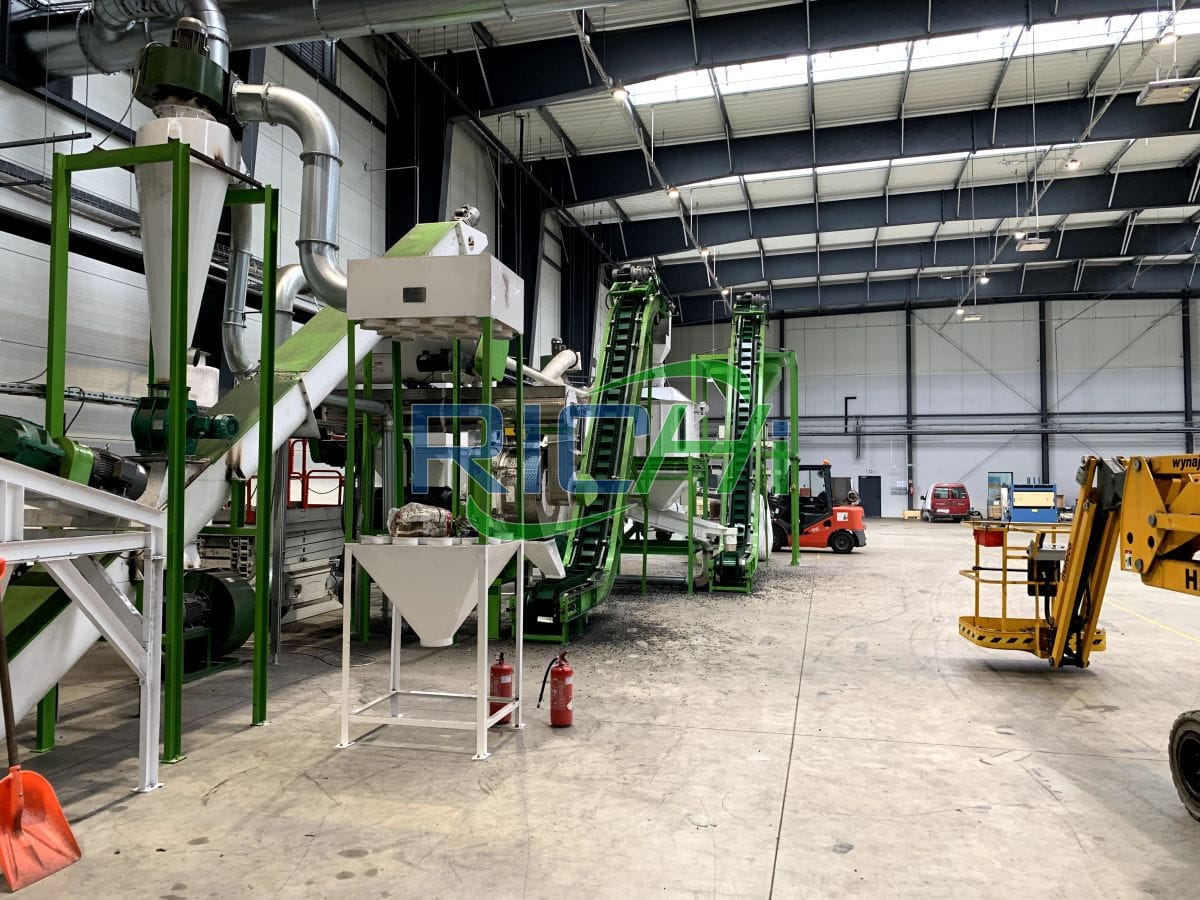
cotton stalk pellet machine in Uzbekistan
- project date: 2023.08.11
- Pellet Size: 6-10mm
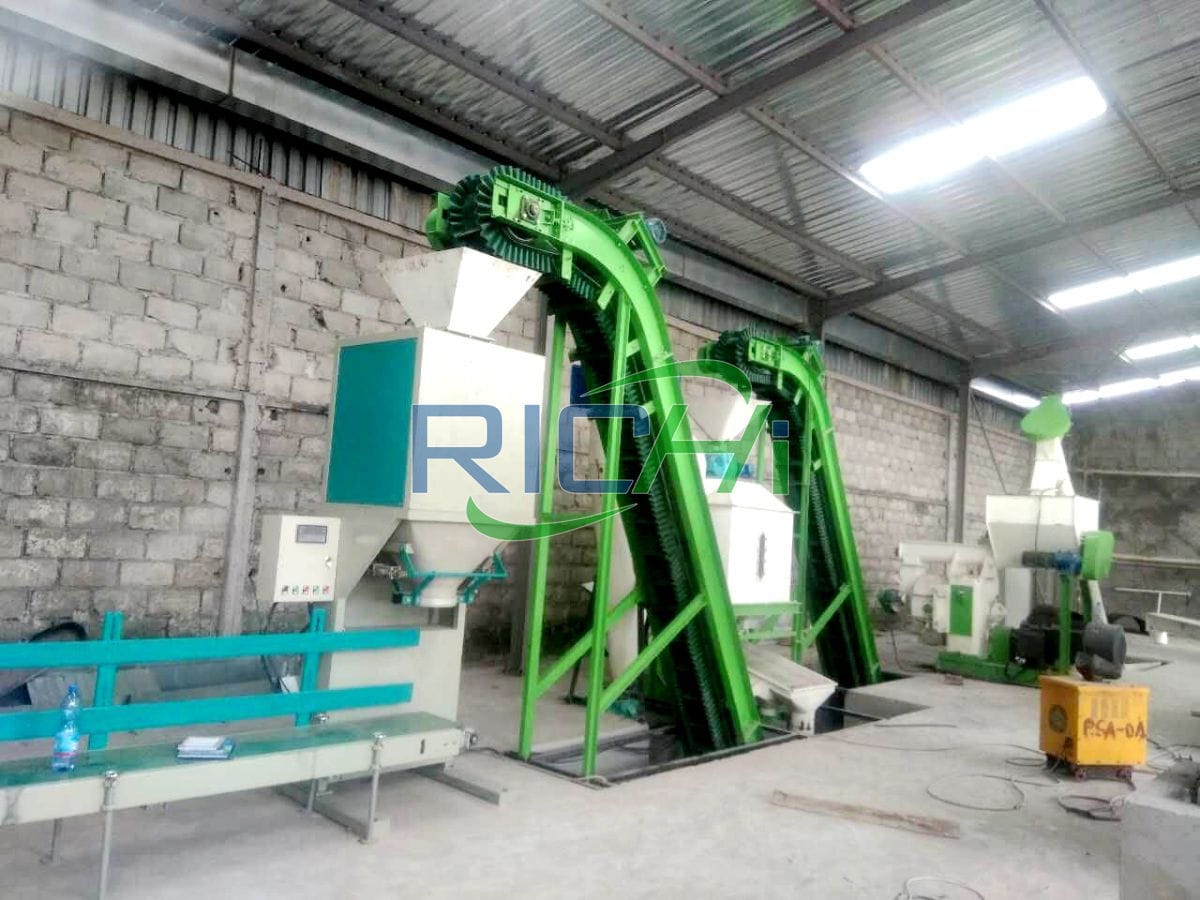
cotton stalk pellet machine in India
- project date: 2020.03.28
- Pellet Size: 8-10mm
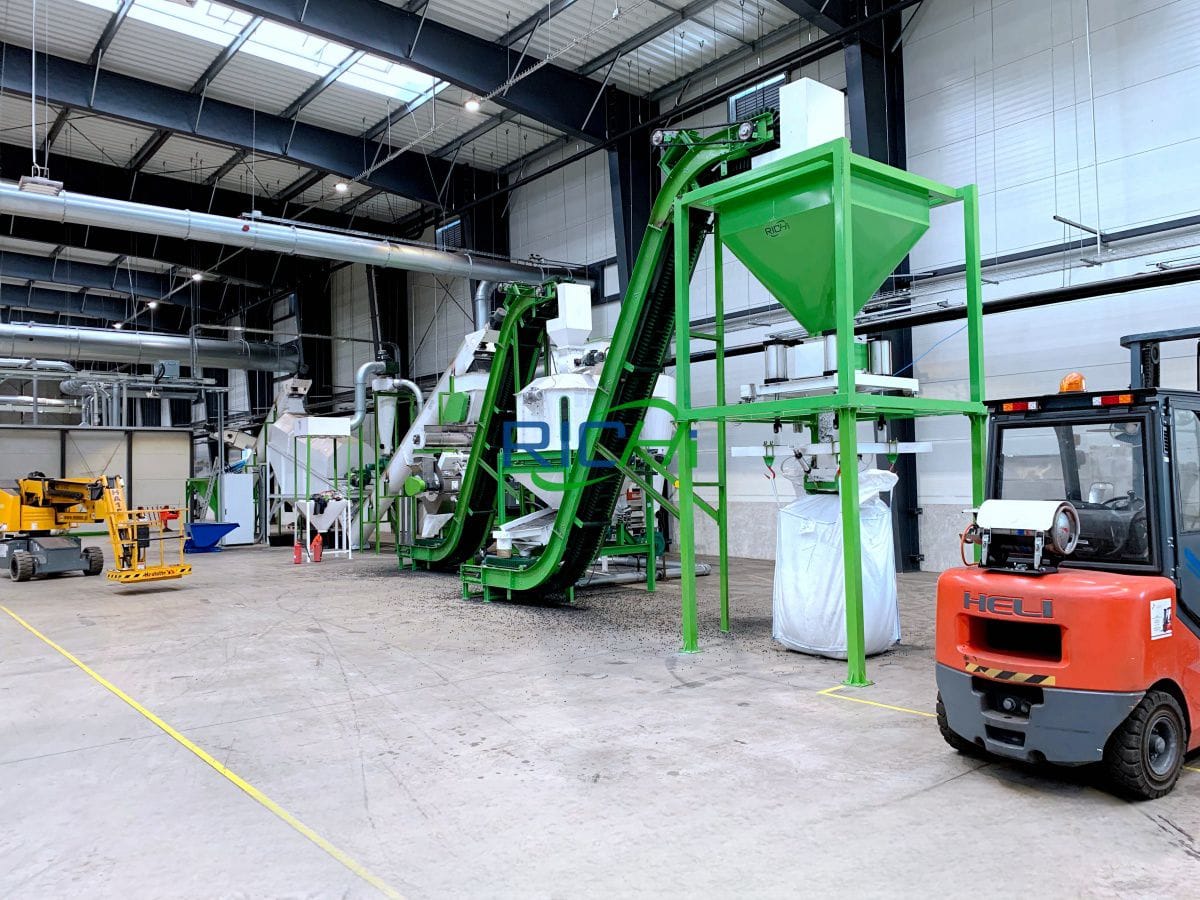
cotton stalk pellet machine in Australia
- project date: 2019.07.07
- Pellet Size: 8mm
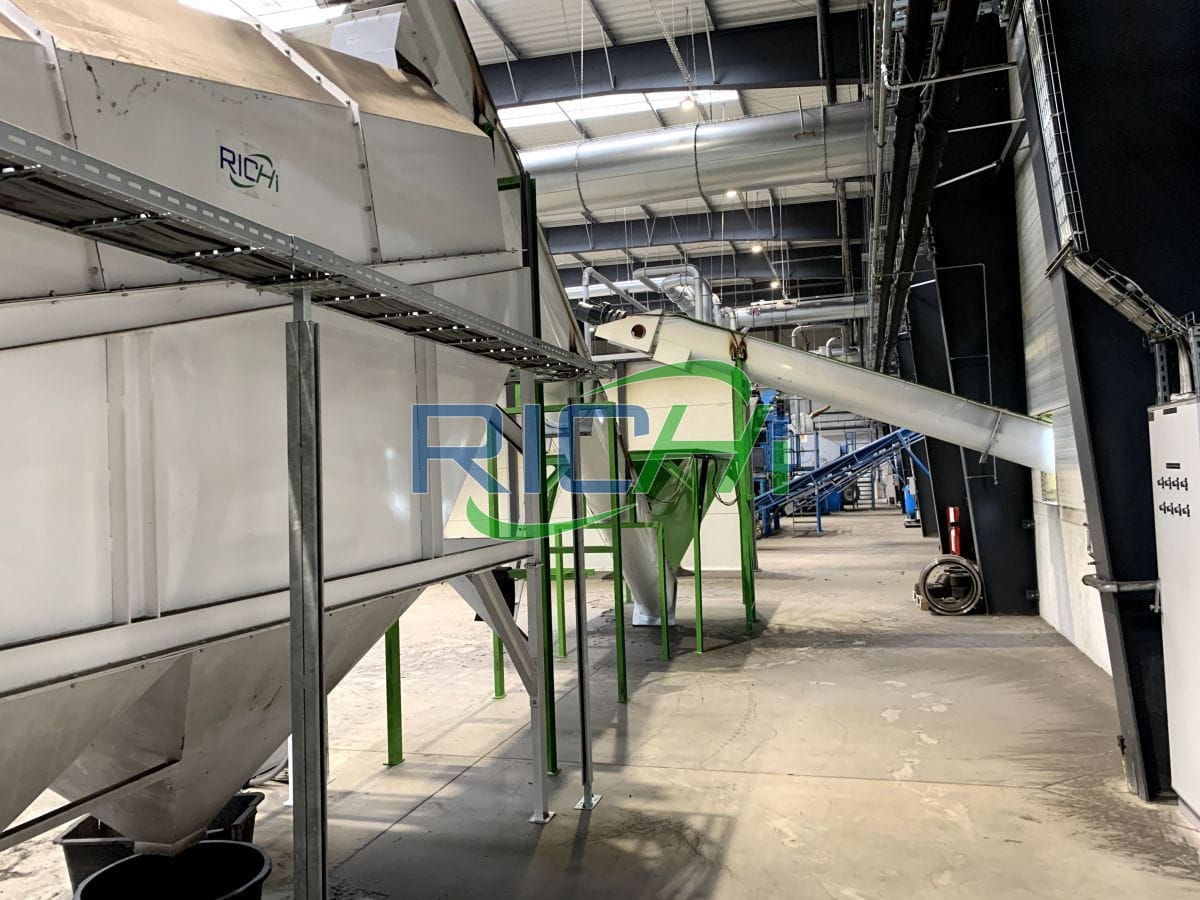
cotton stalk pellet machine in Brazil
- project date: 2022.06.12
- Pellet Size: 8-10mm
How to make cotton stalks pellets?
There are certain differences in the processing technology of cotton stalks pellet feed and cotton stalks pellet fuel. The processing technology of pellet feed is more complicated than that of cotton stalks solid molded fuel, and it adds processes such as impurity removal, mixing, conditioning and external coating.
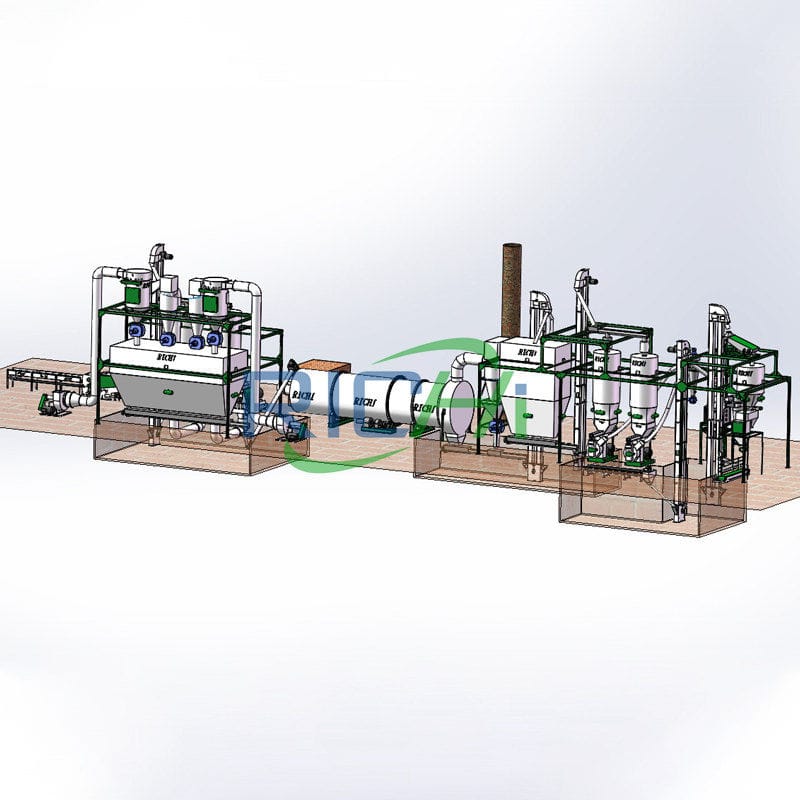
cotton stalk pellet Fuel pellet production
- The processing flow of cotton stalks fuel pellets generally includes: crushing – granulation – cooling – screening – packaging.
- Required equipment includes: hay cutters, bale breakers, grass grinders, cotton stalk pellet machines, coolers, screening machines, baling scales, bucket elevators, scraper conveyors, etc.
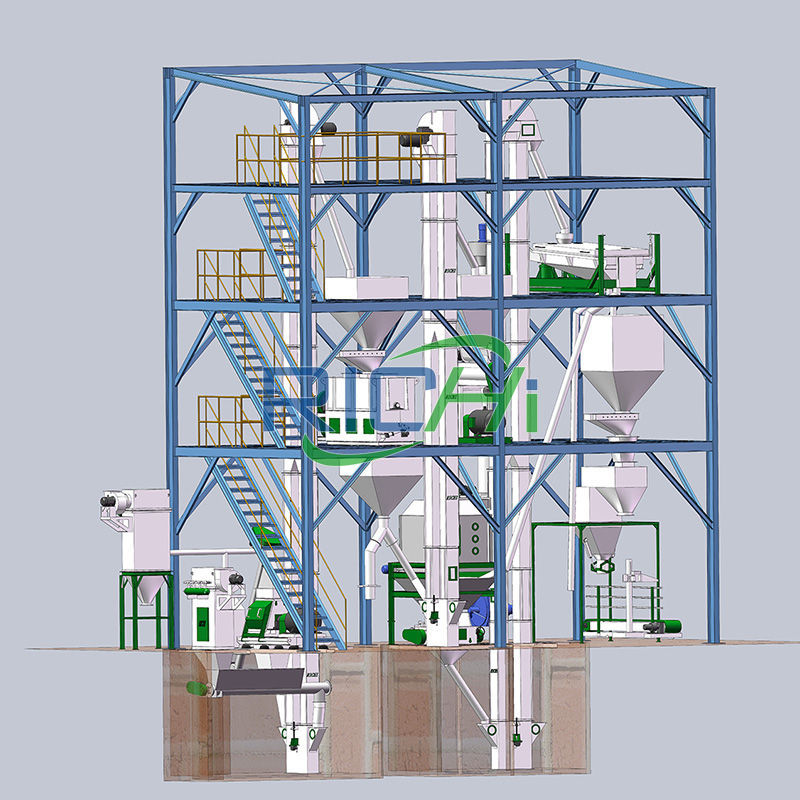
cotton stalk pellet feed producion
- Cotton stalks feed pellets process generally includes: crushing – mixing – conditioning – granulation – cooling – screening – spraying – packaging.
- The required equipment includes: stalk cutters, bale breakers, stalk crushers, mixers, cotton stalk pellet machines, coolers, screening machines, sprayers, baling scales, bucket elevators, screw conveyors, etc.
Comparison Of Cotton Stalk Fuel Pellet And Feed Pellet Processing
| Section | cotton stalks pellet feed | cotton stalks pellet fuel |
| Raw material preparation | Remove large impurities and iron impurities | There is no impurity removal process, and the condition of the raw materials is very complicated, and it is easy to mix soil, |
| Crushing process | Crush raw materials into particle sizes that meet granulation requirements | Crush raw materials into particle sizes that meet granulation requirements |
| Mixing process | Use specialized mixing equipment | No mixing equipment required |
| Conditioning and Humidification | Improve the quality and effect of pressed pellets and increase the nutritional value of feed | no conditioning process |
| Pelleting process | cotton stalk feed pellet machine | cotton stalk fuel pellet machine |
| Cooling process | Cool processed pellets to ensure quality | Cool processed pellets to ensure quality |
| Screening process | Screen out qualified pellets | Screen out qualified pellets |
| Spraying process | After molding, the surface of the pellets is coated with a layer to facilitate the absorption of fatty acids. | No external coating process required |
| Packaging process | Packed into different specifications according to sales needs | Packed into different specifications according to sales needs |
RICHI can customize different cotton stalk straw pellet production line solutions for you based on different sites, raw materials, output, and budgets.
As a leading pellet machine manufacturer in China, Richi Machinery has rich experience and can build a unique cotton stalk straw pellet plant for you based on actual conditions.
Faqs of cotton stalk pellet machine

Which countries are suitable for customers to buy cotton stalk pellet machines and carry out cotton stem pellet processing business?
China is currently the largest cotton producer in the world. The annual output reached 6.84 million tons. Cotton is grown in most parts of the country.
To carry out cotton stalk stem pellet processing, we must first have sufficient raw materials, and the source of this raw material is in the cotton producing area.
According to data from the International Cotton Advisory Committee, in 2022-2023, the global cotton planting area will be 32.274 million hectares, and cotton production will be 25.304 million tons. So, which country produces the most cotton in the world?
The countries with large cotton production in the world are mainly China, India, the United States, Brazil, Pakistan, Uzbekistan, Turkey, Argentina, Burkina Faso and Benin. Other major cotton producing countries include Mexico, Australia, Greece, Mali, Turkmenistan, etc.
Customers in these countries have very good raw material advantages. For investors in this country, it is easier to carry out cotton stalk stem pellet processing business to obtain high profits, because the cost of cotton stalk stem raw materials will be very low.
However, this does not mean that pellet processing investors in other countries are completely unsuitable for investment. The acquisition cost of main raw materials is low. No matter where you are, you can find raw materials suitable for pellet processing.

What are the different raw materials used when processing fuel and feed pellets with a cotton stalk pellet machine?
Both cotton stalks solid pellet fuel and cotton stalks pellet feed use straw as the main raw material. Pellet feed generally uses crop straw as raw material. In addition to various crop straws, the raw materials for straw solid pellet fuel include fruit tree prunings, fruit shells, sawdust, etc.
The following is a comparison of the raw materials used in the processing of cotton stalk fuel pellets and cotton stalk feed pellets:
| Item | pellet feed | pellet fuel |
| Raw ingredients and additives | Add protein, starch, fat, sugar and other substances | The raw materials are relatively simple, and generally no or a small amount of additives are added. |
| Raw material moisture | 16%~18% | 10%~15% |
| Raw material particle size | <10 mm, and >6 mm | <10 mm, and >6 mm |
| Pellet diameter | 2-12mm | 6-12mm |

How to choose cotton stalk pellet machine?
When selecting and purchasing a cotton stalk pellets machine, you can consider the following factors to help you choose a more suitable pellet machine equipment.
- No matter which manufacturer you want to buy a pellet machine from, please remember that quality comes first. A good quality pellet machine can not only ensure stable production, but also save some unnecessary maintenance costs.
- When purchasing a cotton stalk pelletizer machine, be sure to confirm whether the manufacturer’s after-sales service is timely and reliable, because customers may encounter unexpected situations that they cannot handle at any time during the production process. At this time, if the manufacturer cannot help you deal with it in time, the customer will be in trouble. There may be a risk of discontinuation of production.
- Ease of operation is also an important factor, because if a pellet machine is too complicated to operate, it will lose many customers because not all customers are engineers.
- Fully consider the safety of the pellet machine. A cotton stalk pellet processing machine produced by a reliable manufacturer will be very safe. Customers don’t have to worry about flying screws during the cotton pellet production process that will hurt you or damage other equipment. Responsible manufacturers will undergo complete safety testing before their equipment leaves the factory.
- Ask the manufacturers some professional questions and require them to respond within a limited time. Whether a complete solution can be provided within a limited time is also a test of the manufacturer’s technical strength.
- Can we promise to replace parts free of charge during the warranty period? Of course, every customer hopes to buy satisfactory equipment at the lowest price. As far as the current market is concerned, the price of cotton stalk pellet machines is almost transparent. If the price given by the manufacturer is significantly lower than the market price, then the manufacturer should be abandoned decisively. Don’t cause yourself more trouble just for the sake of petty gains.
To sum up, at present, there are more and more cotton stalk pelleting machine manufacturers, and the quality of their products is also uneven. Customers should spend some time doing research to choose the best pellet machine manufacturer.
RICHI is a leading supplier of straw biomass pellet mill machines in the industry. If you want to start a cotton stalks pellet production business, contact us and we will be happy to be on your shortlist.

How much does a cotton stalk pellet machine and pellet machine system cost?
The price of cotton stalk stem pellet machine is 10,000-100,000 USD. This is the price of a single machine, while a 1-90t/h straw pellet production line requires an investment cost of $30,000-3 million.
Different manufacturers, different raw materials, and different countries will have different prices for straw pellet machines and straw pellet production lines. So, what are the factors that affect the purchase price of straw pellet machine and straw pellet production line?
- Raw material factors.
Raw materials are one of the factors that affect the price of straw pellet machines. Raw materials are a very important factor in the entire biomass solid pellet industry.
For example, if the raw material is dry straw powder, it only needs to be directly granulated; if your raw material is long straw with high moisture and low impurities, then a variety of pre-treatment equipment such as dryers, mowers, straw crushers, and cleaning equipment are required.
In addition, the more types of raw materials used, the more pre-processing equipment is required and the greater the investment. For example, some customers want to process fuel pellets, but use a variety of raw materials such as straw, tree trunks, bamboo, etc. The investment in such a production line will of course be large, but the future profits will also be higher. - Cost factors.
Are local raw materials abundant? Is the transportation convenient? How much does straw recycling cost? What are the utility bills? These will affect the investment and production costs of cotton stalk pellets machines and pellet systems.
Having abundant raw materials, a low straw recycling price, and convenient transportation are prerequisites for investing in a straw pellet machine and a straw pellet production line. - Local policies.
Pellet machines have only begun to develop in recent years. Therefore, local governments need to adopt a series of policies to encourage the development of this industry. Some countries and regions provide subsidies for the processing of biomass agricultural and forestry waste pellets.
As a cotton stalk pellet machine manufacturer, RICHI MACHINERY specializes in the production of straw pellet machines, biomass pellet machines, feed pellet machines and a full set of biomass pellet production line equipment.
It has won many honors with its exquisite craftsmanship and advanced technical level, adhering to the “customer-oriented, pursuit of excellence” philosophy values. Following the quality policy of being responsible for every process, every product, and every user, we serve our customers wholeheartedly.

Can a cotton straw pellet production line be designed to produce pellet fuel and pellet feed at the same time?
At present, cotton stalks in many areas is not processed but fed directly. Livestock mainly eats the leaves and the upper part of the stem, resulting in serious waste of straw.
Relevant studies have shown that the caloric value and cellulose and lignin content of different parts gradually increase from the upper part to the lower part of the straw, while the hemicellulose content gradually decreases, while the opposite is true for nutrients.
According to the actual situation, the method of mutual use of straw between feed mills and fuel plants can be used.
In areas where straw is directly fed, the remaining straw after livestock consumption is exchanged with the straw collected by the fuel plant in an equal amount of 1:1; in areas where there are pellet feed plants, the method can be adopted. The upper and lower parts of the stem are cut off so that the upper part is used for feeding and the lower part is used for burning.
This not only increases the utilization rate of straw, reduces the cost of straw raw materials, but also solves the problem of competition between feed and fuel use of raw materials, achieving a win-win goal for feed mills and fuel plants.
Whether it is cotton straw feed processing or cotton straw fuel processing, there is great potential. Currently, more and more investors are beginning to establish cotton straw feed and fuel composite pellet production lines.

What materials and processes are used for the pressure roller of your cotton stalk pellet machine?
The pressure roller ring die system of the cotton stalk pellet press machine is the main working part of the ring die pellet machine. Its main parts include: ring die, pressure roller, pressure roller support shaft, bearing and sealing end cover, as well as other auxiliary parts.
The pressure roller is one of its main components. It is used in conjunction with the ring die. The two squeeze the raw materials to shape the materials. The selection of the material and basic parameters of the pressure roller is directly related to the performance of the pellet machine, so it is very important.
- Design of the pressure roller of the cotton stalk pellet machine.
The pressure roller assembly is mainly composed of an eccentric shaft, a pressure roller shell, a rolling bearing, etc. Generally speaking, a ring die pellet machine has at least two pressure rollers in the pelletizing chamber. - Pressure roller parameters of cotton stalk pellet machine.
The diameter of the pressure roller directly affects the material intake angle during granulation. Therefore, a large-diameter pressure roller should be used. For a two-roller ring-die pellet machine, the relationship between the pressure roller diameter d and the inner diameter of the ring die is D>2d. Considering factors such as gap adjustment, d=(0.4~0.485)D is generally selected. - Cotton stalk pellet machine pressure roller material.
RICHI uses high-quality 50 steel and 100Cr6 bearing steel, of which 100Cr6 bearing steel is equivalent to the national standard GCr15. It has exquisite high-temperature quenching technology, good wear resistance and high contact fatigue strength. It ensures the hardness and wear resistance of the pellet machine roller from the source. Use The lifespan is at least twice that of ordinary products in the domestic market. - Cotton stalk pellet machine roller technology.
Since the working process of the pressure roller is a process of constant friction and extrusion with the material, and when the raw cotton stalks granulator is working, the linear speeds of the die and the roller are basically the same, and the diameter of the pressure roller is smaller, so the wear rate of the pressure roller is greater than that of the ring die.
In order to replace the mold and roller at the same time as much as possible, the hardness of the pressure roller should be 5-6HRC higher than that of the ring die. The production process of the pressure roller of the pellet machine is equally important. Users should ask clearly about the material and process of the pressure roller when choosing the pressure roller. , choose a pressure roller with higher wear resistance.
The above is the content of the cotton stalk pellet machine pressure roller materials and processes. The pressure roller is a key working part of the pellet machine. If the pressure roller wears too fast, it will not only reduce the pellet forming rate and increase production costs, but also directly affect productivity.

What factors will affect the production efficiency of cotton stalk pellet machine?
The main factors that affect the production efficiency of the molding machine include: the number of pressure rollers, the opening rate, radius and width of the ring die, and the rotation speed.
The increase in any one of the parameters will increase the productivity of the molding machine, but each parameter is restricted by factors such as the structure of the molding machine, the mechanical properties of the component materials, and energy consumption.
- Increasing the diameter and width of the ring die and increasing the diameter of the pressure roller are effective ways to improve productivity. However, increasing the width of the ring die will affect the uniformity of material distribution and cause vibration; the diameters of the ring die and the pressure roller are limited by the rationality of the overall structure of the cotton stalk pellet machine.
- Increasing the rotational speed will increase productivity, but the rotational speed will be limited by the motor power. In addition, as the rotational speed increases, the mechanical energy will increase and the overall energy consumption will increase.
- Increasing the number of pressure rollers will also increase productivity, but increasing the number of pressure rollers will limit the diameter of the pressure rollers, which will also reduce productivity. In addition, the rationality of the stress on the pressure rollers must also be taken into consideration. Therefore, it is necessary to determine the reasonable number of pressure rollers through theoretical analysis and calculation.

What should I pay attention to when using cotton stalk pellet machine?
Factors such as raw material moisture content, raw material crushing particle size and heating temperature will have a great impact on the forming of cotton stalk pellets. Therefore, when using cotton straw granulator, you need to pay attention to the following aspects:
- Due to the high lignin content, the relaxation density of cotton stalk stem pellets is better than that of agricultural straw and gray straw. agricultural straw is rich in extracts, which reduces the friction between raw material particles during the molding process. Therefore, its molding energy consumption of molded pellets is lower than that of woody biomass and ash-rich straw, but its durability is better than that of ash-rich straw.
- The moisture in the raw material acts as a natural lubricant in the cotton stalk stem pelleting process. A too low moisture content of the raw material will reduce the ductility of the raw material particles and increase the friction between the particles, resulting in an increase in molding energy consumption; while an excessively high moisture content will reduce the ductility of the raw material particles and increase the friction between the particles.
The rate will reduce the tightness between particle layers, making biomass molding difficult. When the moisture content is 15%, the quality of cotton stalk molded pellets is the highest.
Therefore, when the moisture content of the raw material is controlled within the range of 10% to 15%, the relaxed density, compressive strength and durability of the molded pellets can be effectively improved, and the molding quality can be ensured within an acceptable range. - The smaller the particle size of the raw material, the larger the contact area of the raw material particles during the molding process, the stronger the force between particles, and the higher its relaxed density, compressive strength and durability.
In addition, when the particle size is less than 1mm, the raw material particle size has little impact on the energy consumption of its molded pellets. When the particle size is greater than 1 mm, the internal particle fit of the cotton plant stem pellets decreases, and the quality characteristics of the molded pellets decrease significantly. - In cotton plant stem pelleting, the higher the molding temperature, the higher the softening degree of lignin in the biomass raw material, and the more obvious the improvement in the relaxation density, compressive strength and durability of the cotton pellets.
In comparison, cotton stalks are most sensitive to molding temperature due to their high lignin content. Therefore, it can be considered that for cotton stalks, the molding temperature should be 170°C.
Judging from the impact of raw material characteristics and process parameters on the quality characteristics of cotton pellets and molding energy consumption, the quality characteristics of cotton pellets are uneven due to large differences in their own characteristics.
Therefore, pre-treatment methods can be used to modify the raw materials to reduce the quality differences of molded pellets caused by cotton stalks types.

If I want to buy a cotton stalk pellet machine for feed production, what are the standards for final cotton stalk feed pellets and pellets machine?
Below, RICHI provides some product quality evaluation indicators, inspection methods and inspection rules for straw pellet feed presses. This method is suitable for product quality evaluation of ring die raw cotton stalks feed pellet making machine.
1. Quality requirements
(1) When processing 6 mm feed pellets:
The performance of a cotton stalk pellet machine with a die diameter of 6 mm and the quality of pellet feed should meet the following requirements:
- Productivity shall not be lower than design requirements;
- Power consumption per ton of material ≤70 kW·h/ton;
- Noise: ≤90 decibels when the host power is not greater than 55 kilowatts, and ≤110 decibels when the host power is greater than 55 kilowatts;
- Dust concentration ≤10 mg/cubic meter; pellet feed forming rate ≥95%;
- The temperature of granulating working parts is ≤ 100 degrees Celsius;
- The density of finished pellets is 900-1500 kg/cubic meter;
- The moisture content of finished granules is 9%-14%;
- The solidity of the finished cotton stalk pellets is ≥90%.
(2) When processing 8 mm pellets:
The performance of the cotton stalk pellet machine with a die diameter of 8 mm and the quality of the pellet feed should comply with the following regulations:
- Productivity shall not be lower than design requirements;
- Power consumption per ton of material ≤ 60 kW·h/ton;
- Noise: ≤90 decibels when the host power is not greater than 55 kilowatts, and ≤110 decibels when the host power is greater than 55 kilowatts;
- Dust concentration ≤10 mg/cubic meter;
- The forming rate of pellet feed is ≥95%;
- The temperature of granulating working parts is ≤ 100 degrees Celsius;
- The density of finished pellets is 900-1500 kg/cubic meter;
- The moisture content of finished granules is 9%-14%;
- The solidity of finished cotton stalk pellets is ≥90%.
2. Safety requirements
- Couplings and other exposed moving parts should have safety protection devices. The protection devices should have sufficient strength and stiffness to ensure that they are protected during normal use. There should be no cracks, tears or permanent deformation.
- Protective devices, door covers and other parts that may affect personal safety should have safety signs that comply with regulations.
- The pellet machine body should have an eye-catching grounding mark.
- The cotton stalk pellet machine should be equipped with an overload protection device.
- Under normal conditions, the insulation resistance between the electrical terminals of each motor and the pellet machine body should be no less than 20 megohms.
3. Effectiveness of use
The effectiveness of the cotton stalk pellet maker machine should be no less than 95%.

What are the characteristics of pellet fuel processed by cotton stalk pellet machine?
1. Pellet shape
The appearance of cotton stalks pellet fuel is cylindrical, with a smooth surface and a slight luster, a density >1, a grayish-yellow color, an outer diameter of 6 to 12 mm, and a length ranging from 10 to 36 mm.
2. Calorific value
The heat released when a unit mass of cotton stalks pellet fuel is completely burned is called the calorific value of this fuel. Due to the high density of straw pellets, the combustion efficiency is high. During combustion, the core temperature can reach 1100°C, the calorific value can reach 3700-4000 kcal per kilogram, the density is 1.1 tons per cubic meter, and the ash content is <8%. Compared with coal, , oil, also shows its own unique advantages.
3. Strong firepower and less residual ash
Cotton stalks pellet fuel has the characteristics of not deforming or falling apart as a whole during combustion, and is easy to burn. Due to high-pressure molding, the pellet density is high, so it is flame-resistant, has strong firepower and high temperature. Coupled with reasonable air distribution and sufficient oxygen supply, secondary combustion can be achieved, so it is pollution-free and has high fuel efficiency.
Compared with coal burning, there is less residual ash. The collected residual ash can be directly returned to the fields and used as potassium fertilizer. It is a comparative Ideal clean energy.
4. Clean and environmentally friendly
Using cotton stalks pellet fuel, it is clean, environmentally friendly and has little pollution. When cotton stalks pellet fuel is burned, the dust concentration is less than 40 mg per cubic meter, and the sulfur dioxide emissions are 1/15 of coal and 1/7 of fuel. Therefore, using cotton stalks pellet fuel is an effective way to improve air quality and avoid the greenhouse effect.
5. Easy to transport and store
In addition, cotton stalks pellet fuel is easy to transport and store. Since the volume of straw is compressed nearly 9 times after being made into pellets, it is easy to transport and store, greatly reducing storage and transportation costs. Cotton stalks pellet fuel is not prone to mildew in summer, is fire-proof and flame-retardant, and is easy to store for a long time. It can be used as reserve fuel in disaster prevention and prevention.
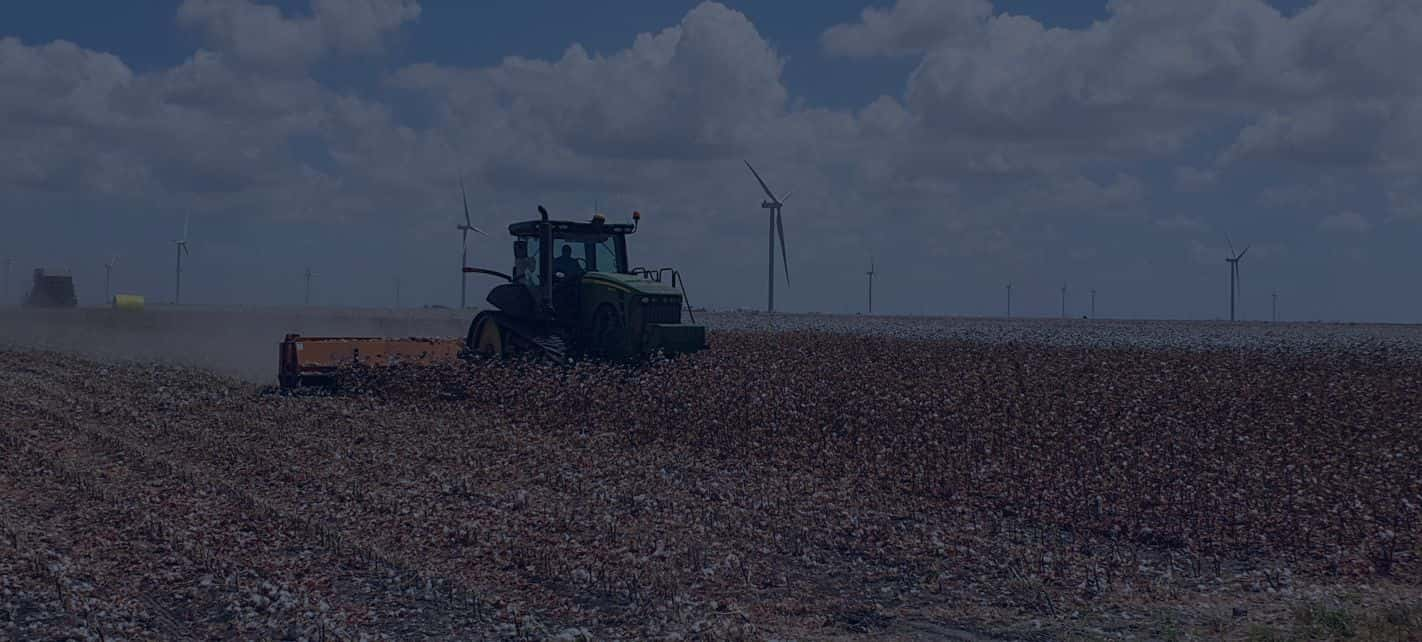
Leading cotton stalk pellet machine system from Richi Machinery
RICHI cotton stalks pellet processing technology has always been oriented toward practicality, efficiency, and low cost of use. In terms of practicality, pellet forming compression technology will be the main one, and in terms of high efficiency and low cost of use, the classic ring mode compression technology will be the main one.
The development of RICHI cotton stalk pellet processing equipment has always been oriented towards serialization of product specifications, high-quality product quality, rationalization of performance-price ratio, and standardization of production and processing. Currently, it can realize the continuity and automation of the straw pellet processing process, in order to promote global crop straw production. Resource utilization and commercial production provide technical and equipment support.
If you want to get advice from a professional cotton stalk pellet machine processor, contact Richi Machinery to get the most complete pellet processing solution and the most reliable pellet processing equipment! (Find RICHI on YouTube)